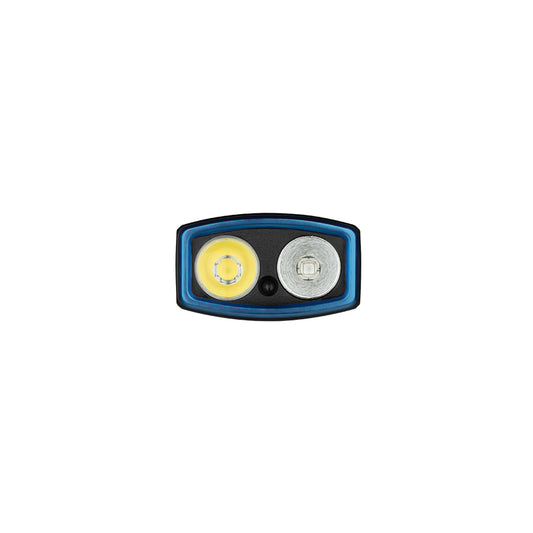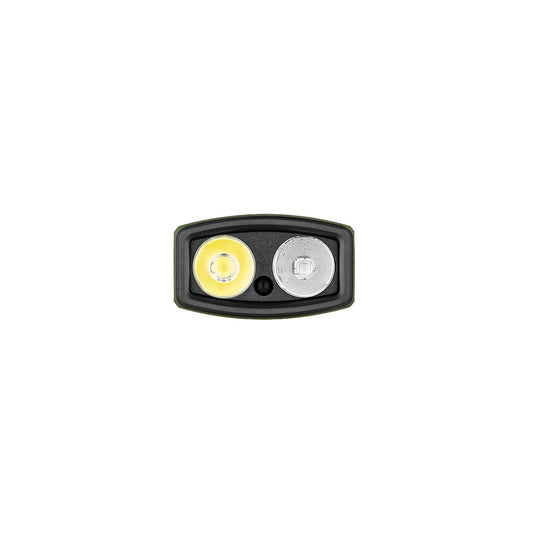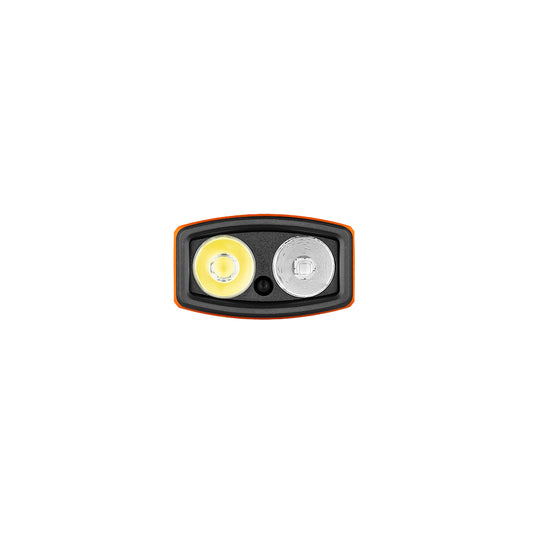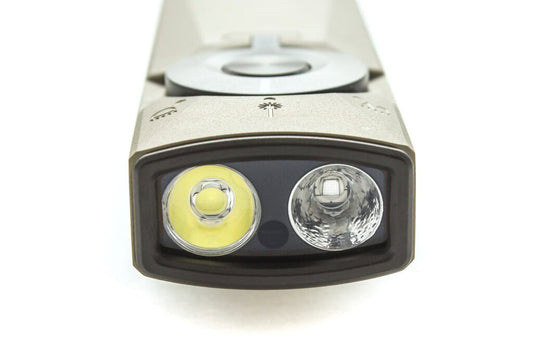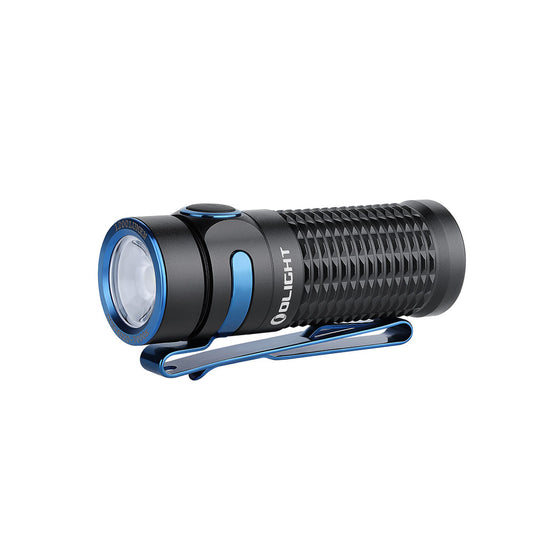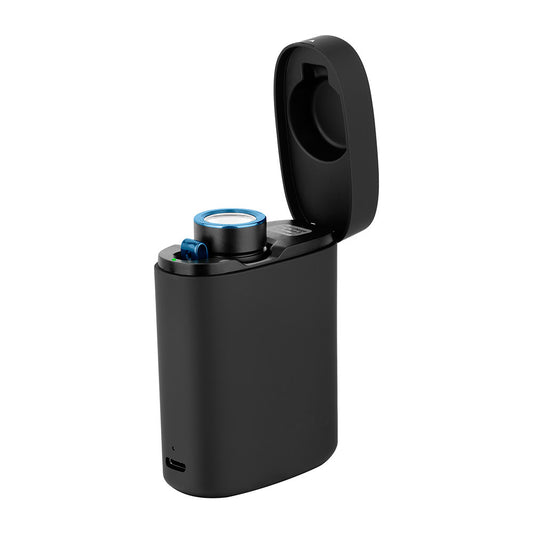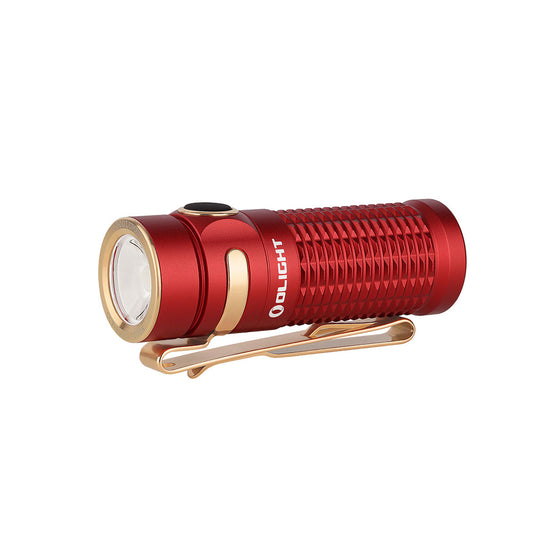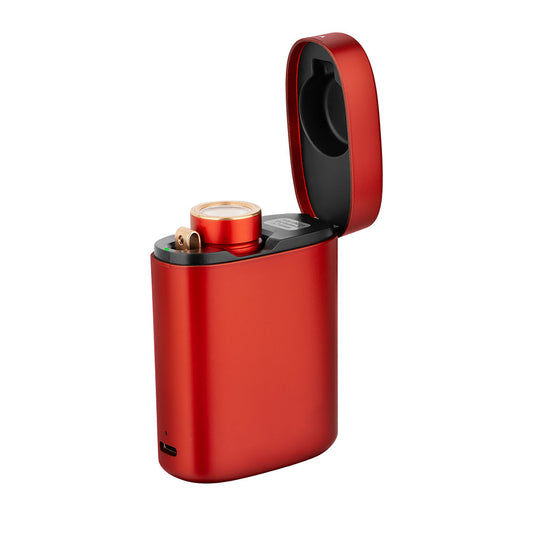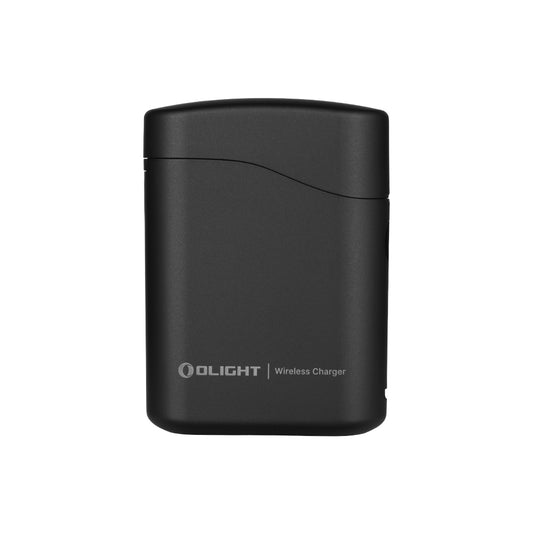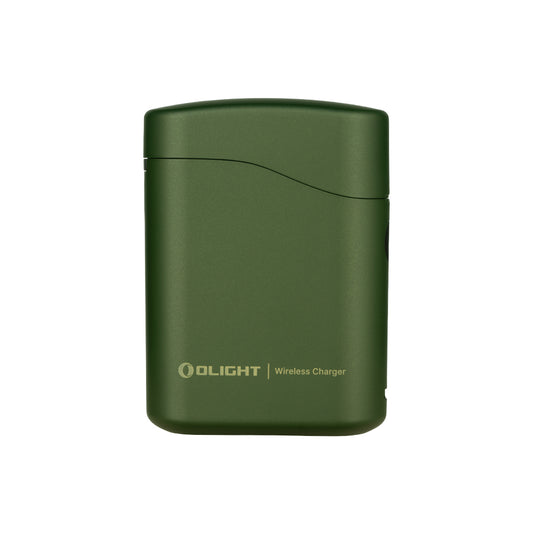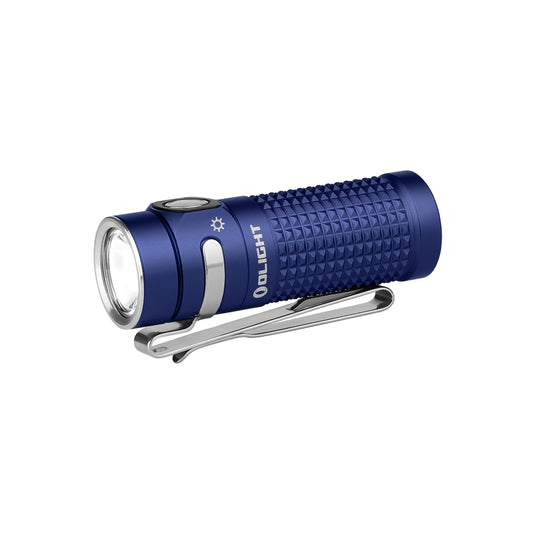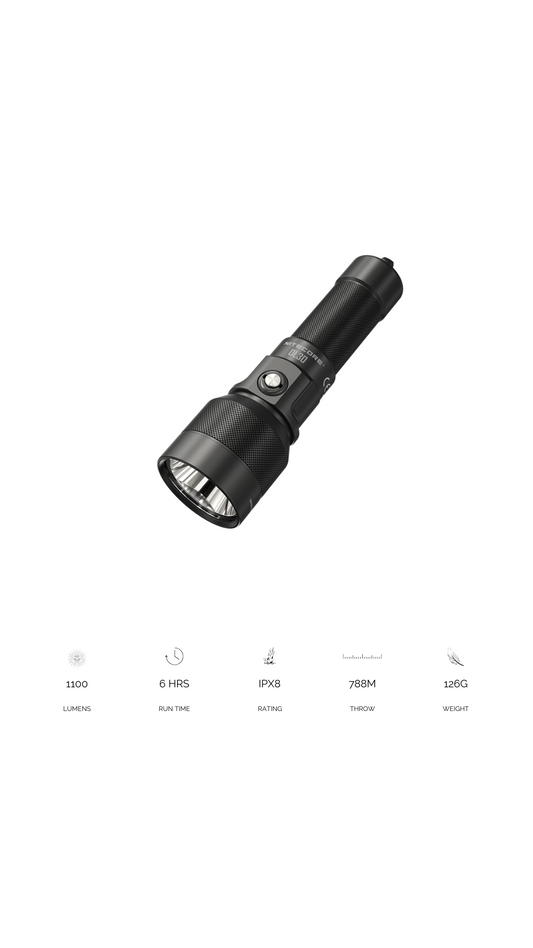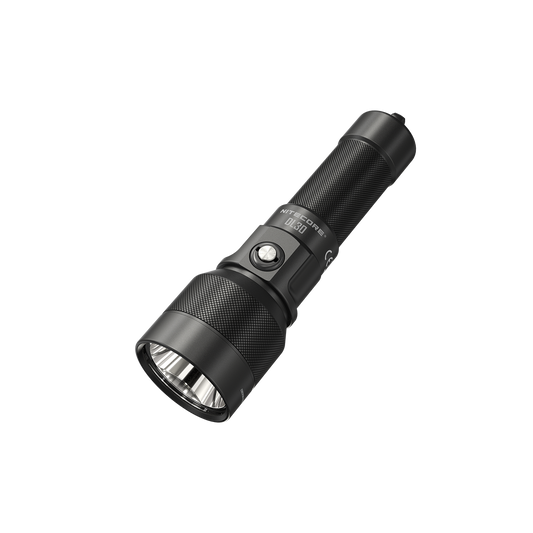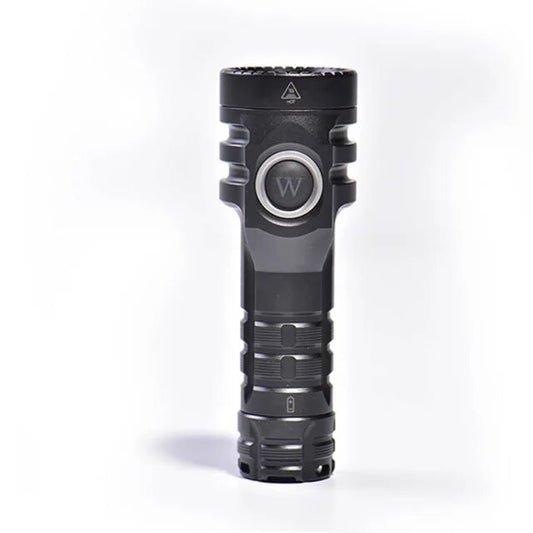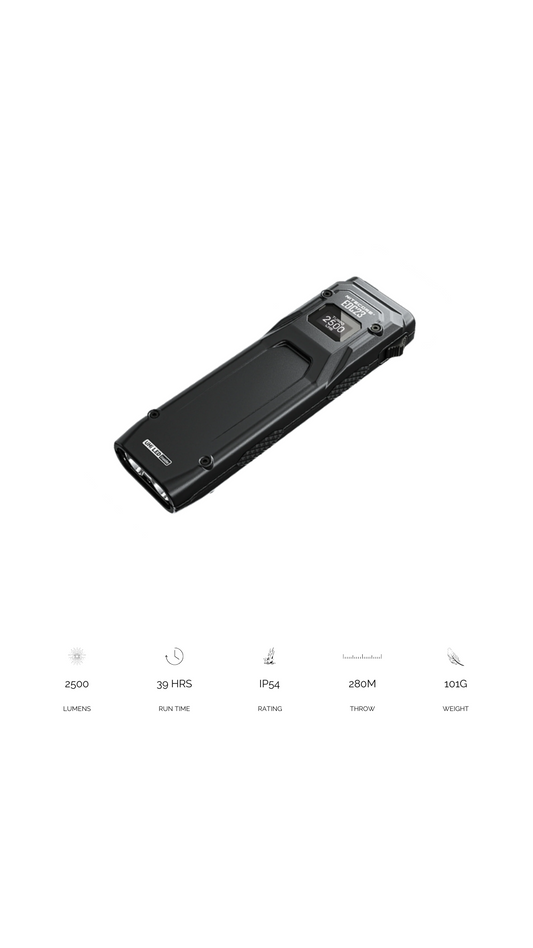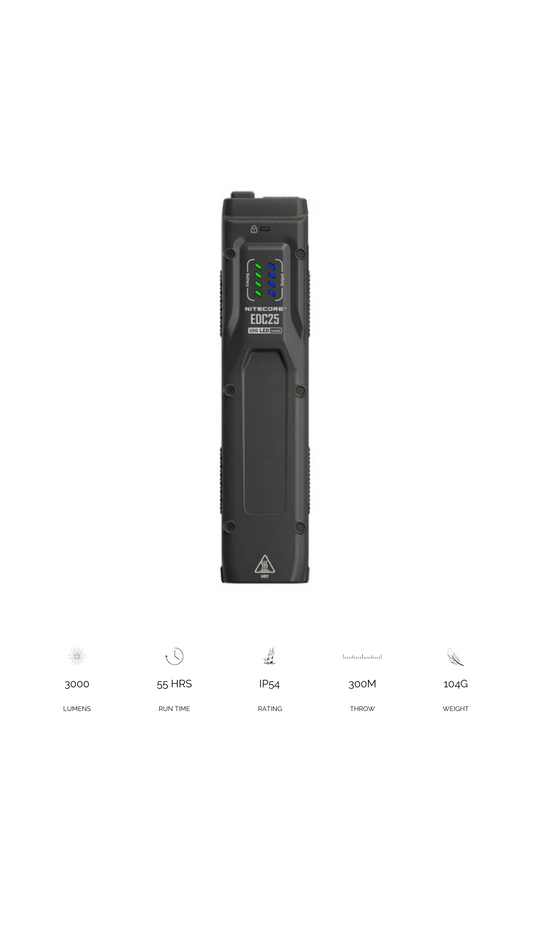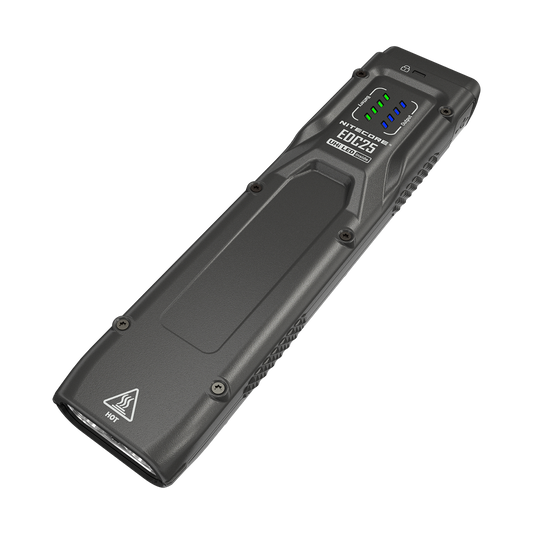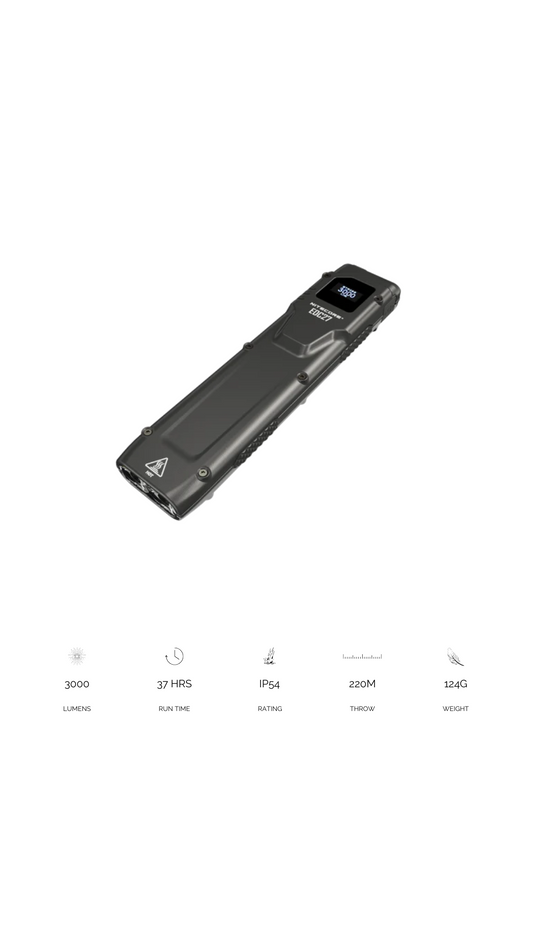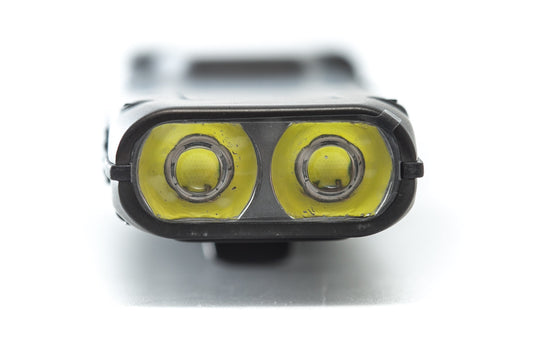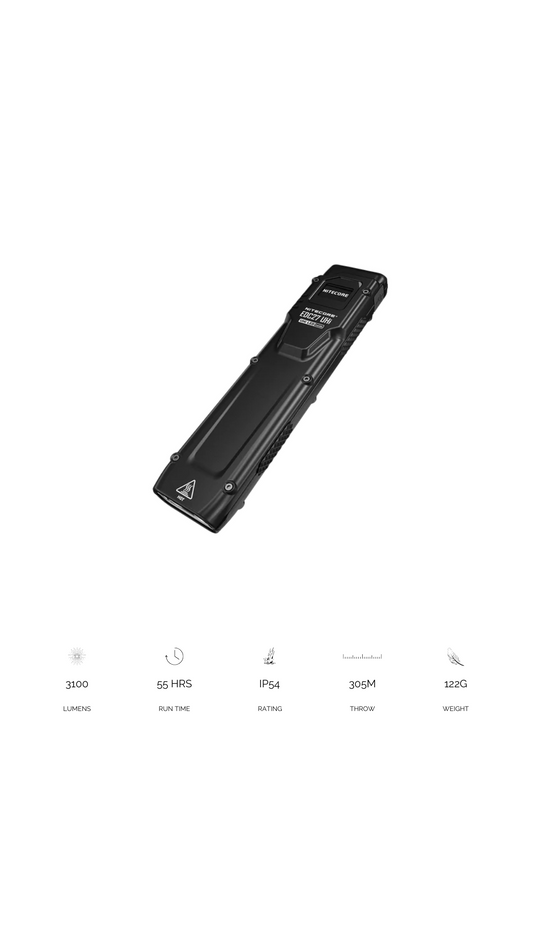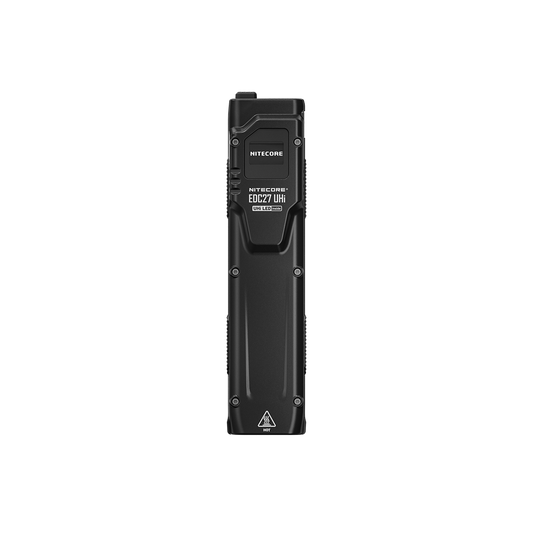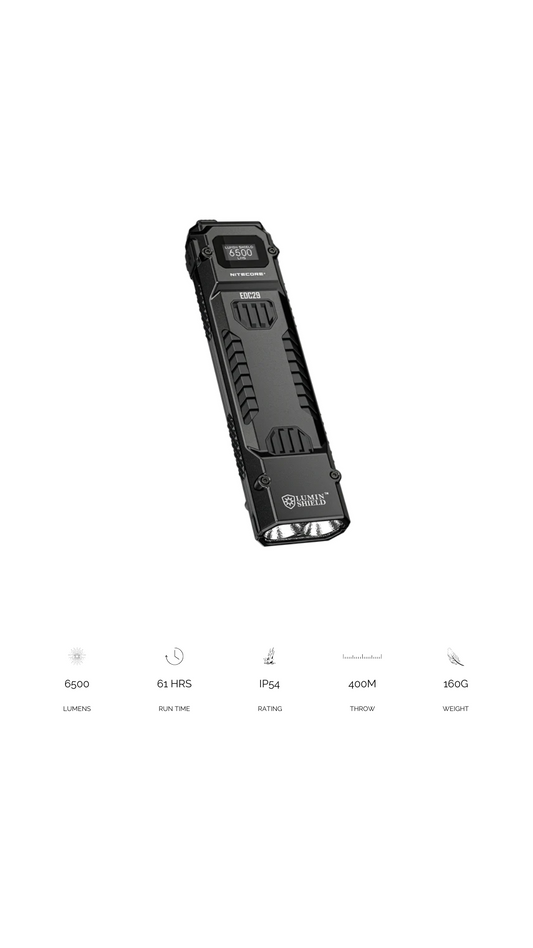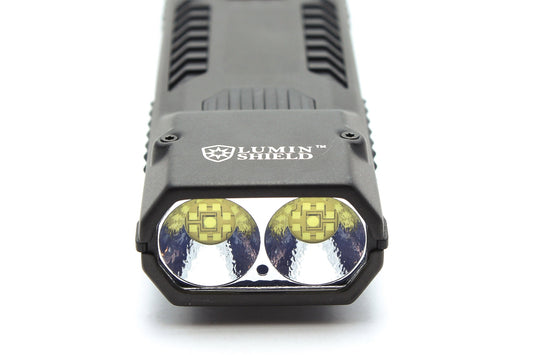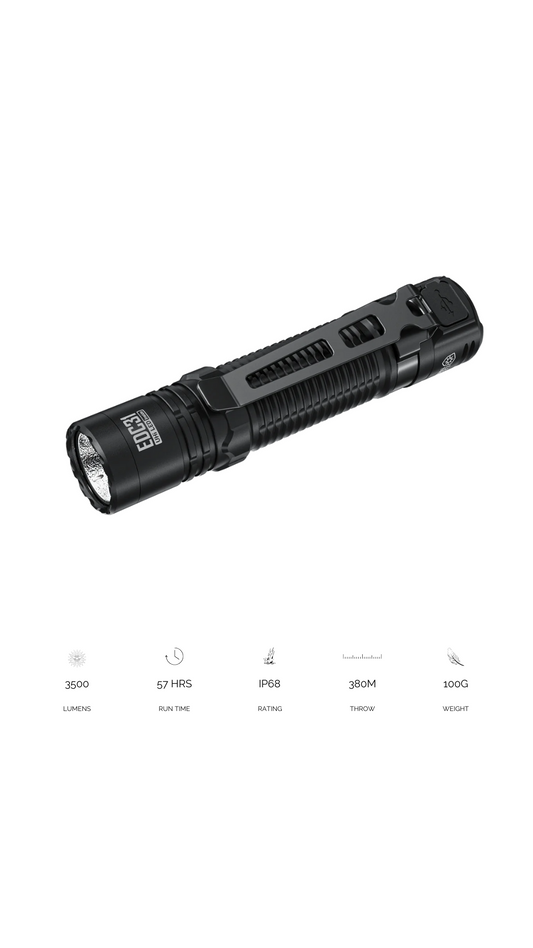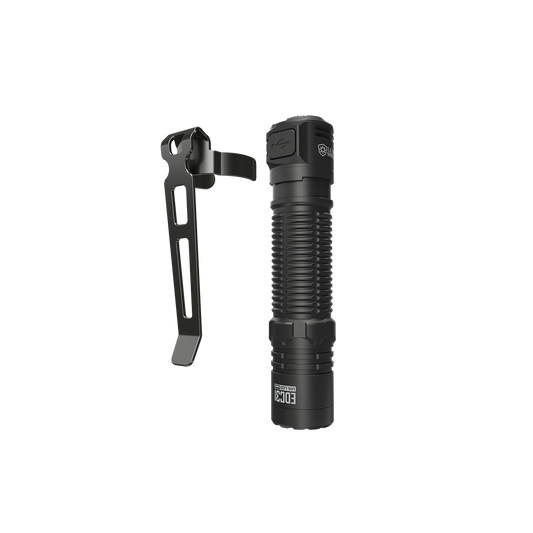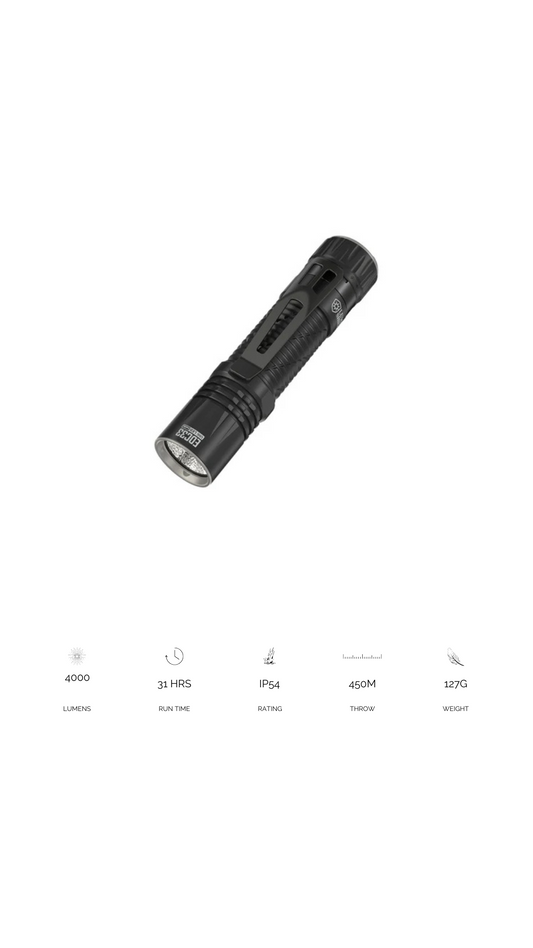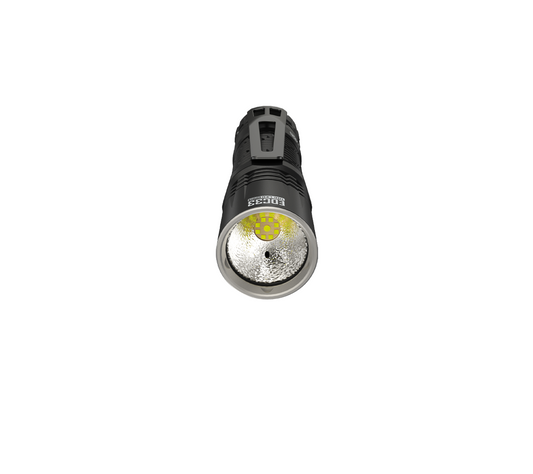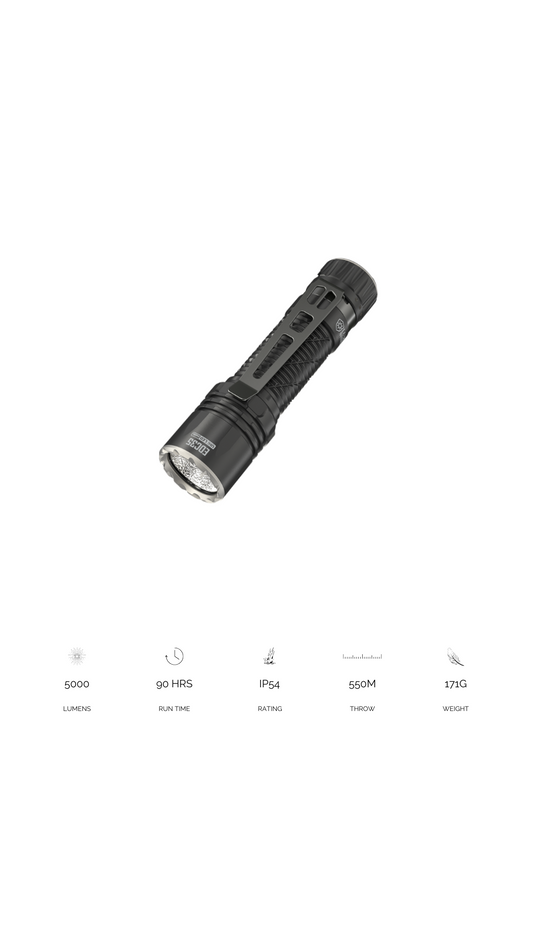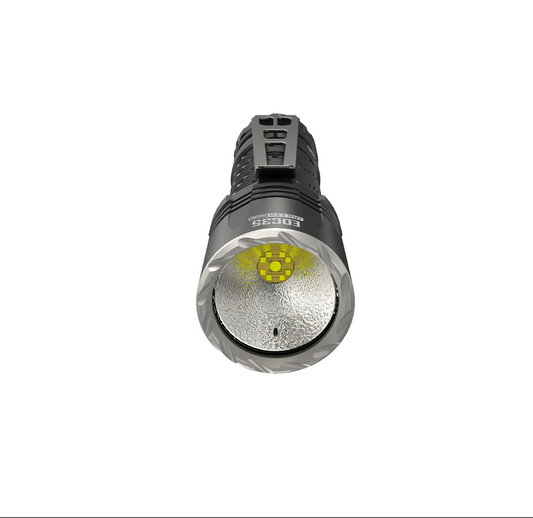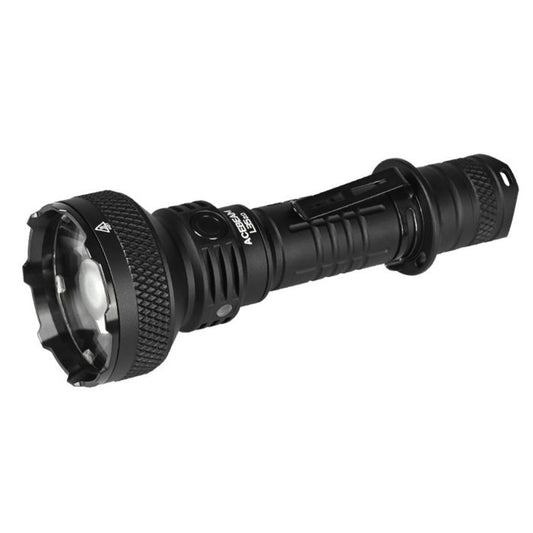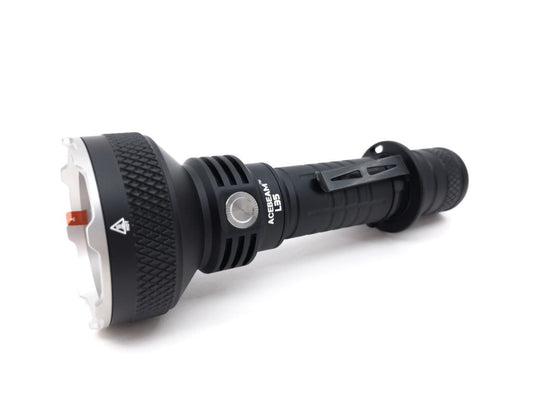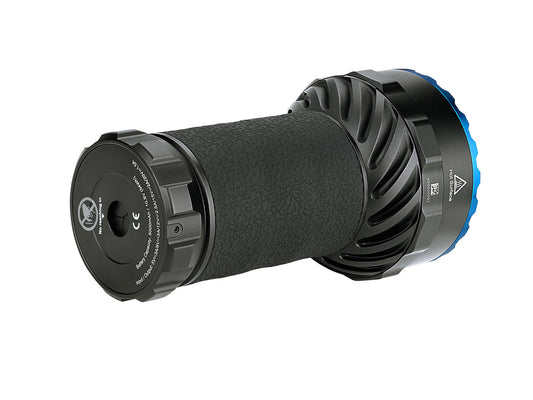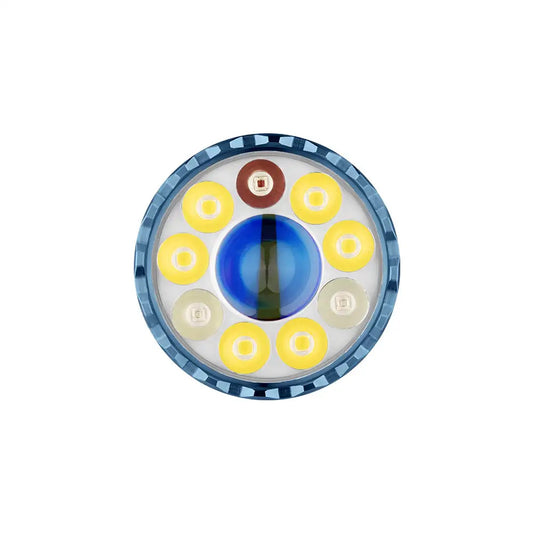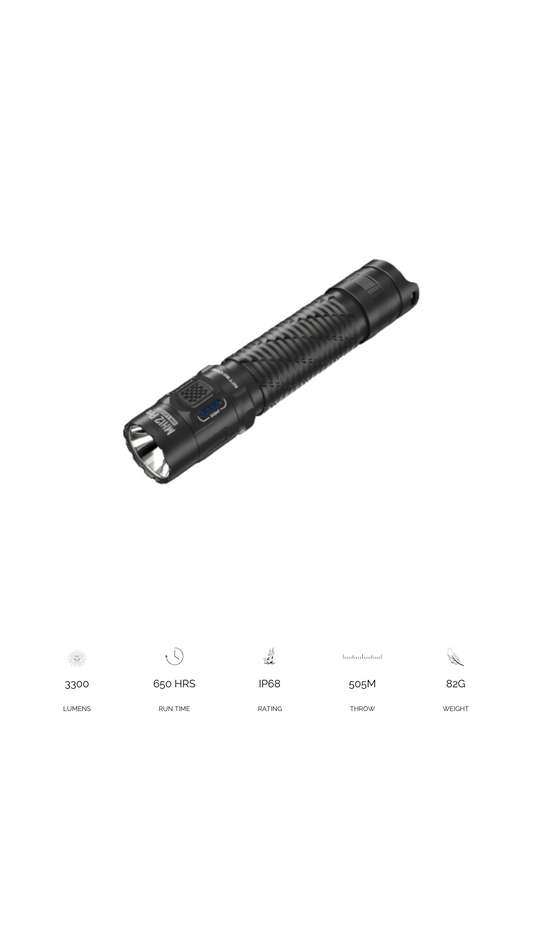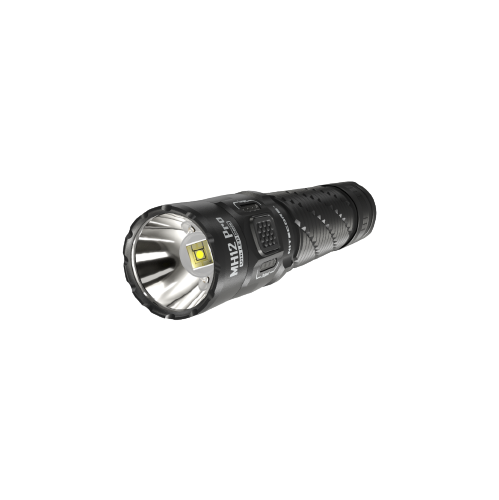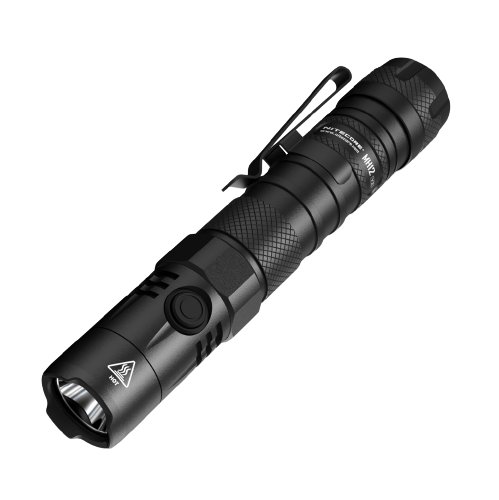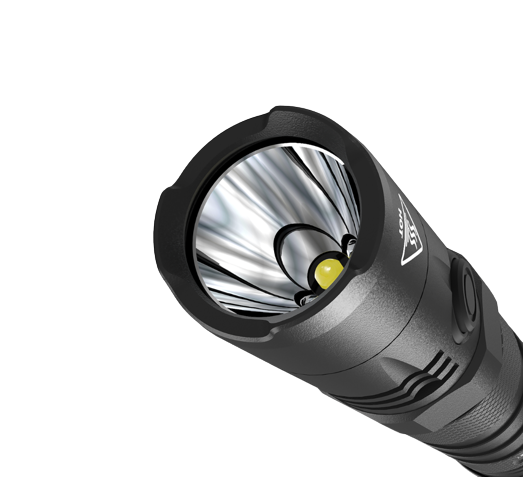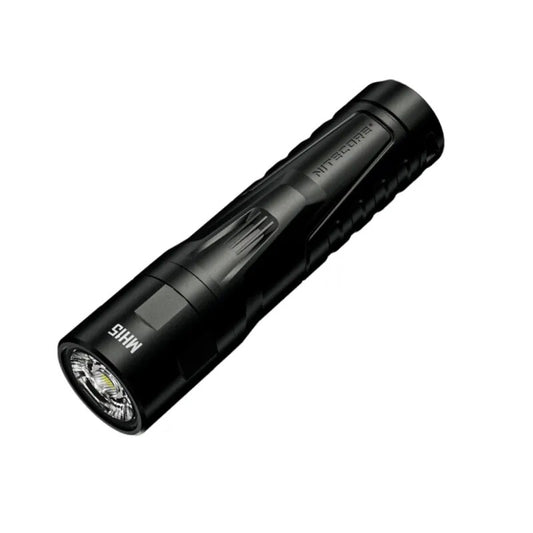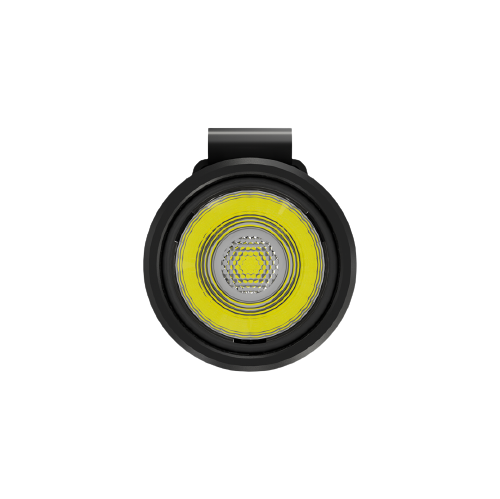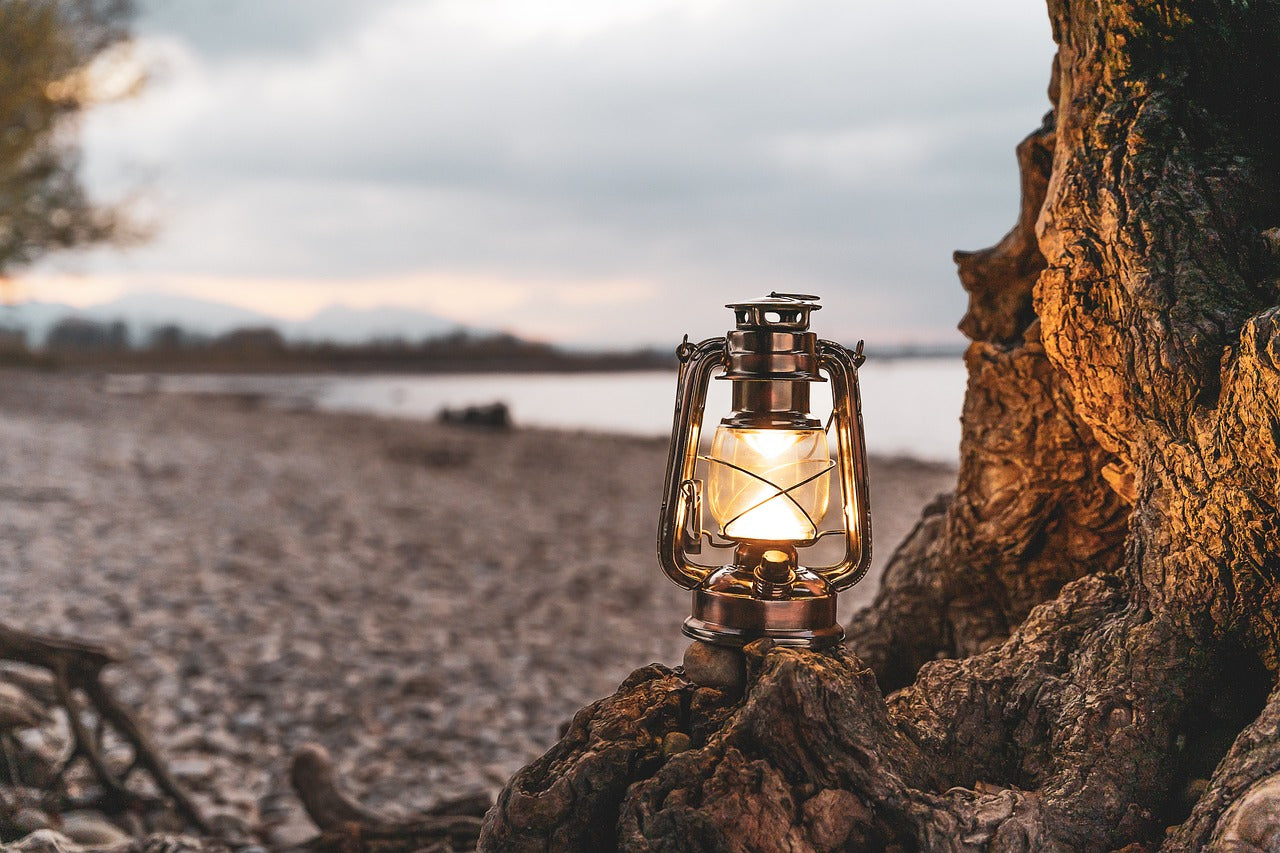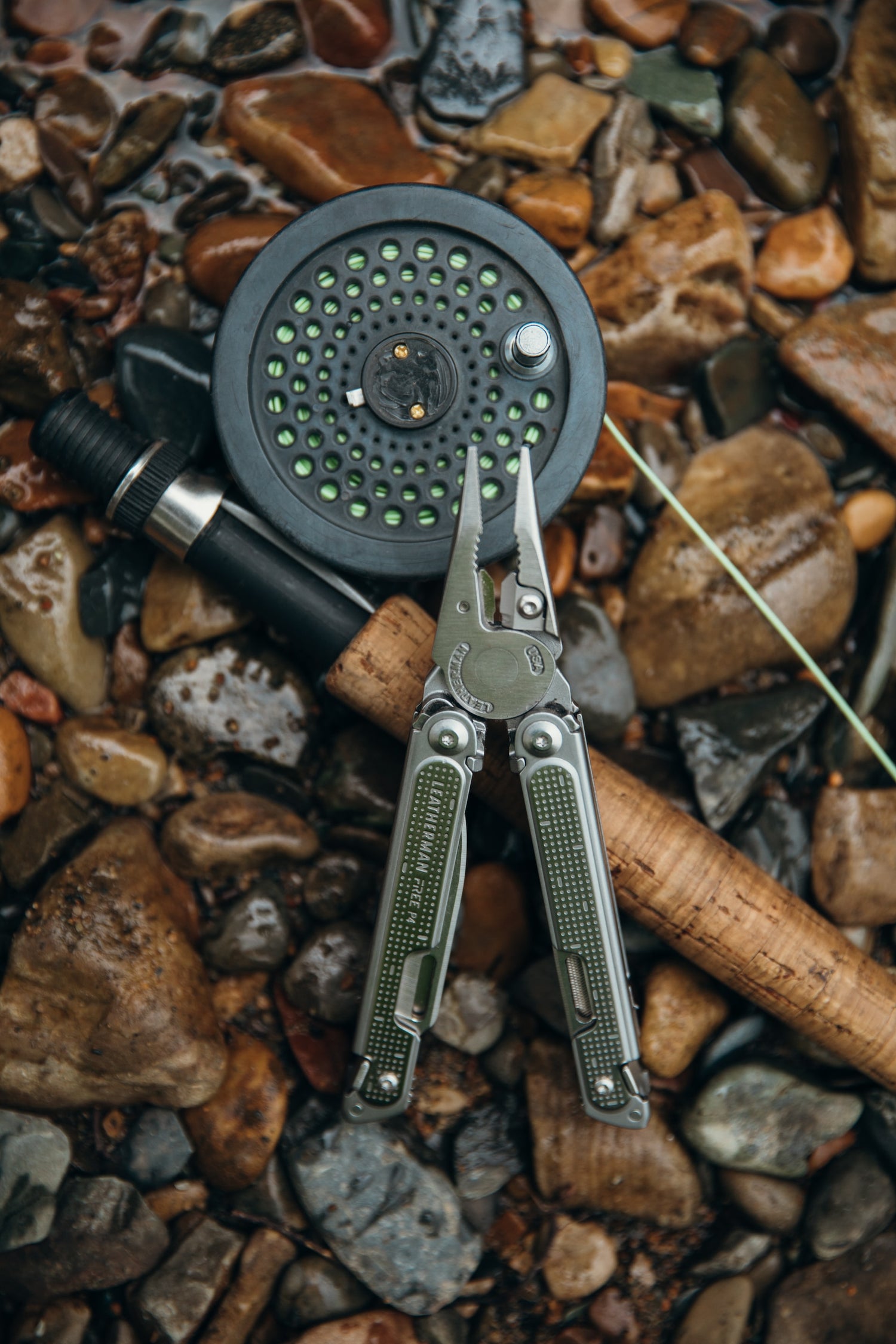
Beyond Blunt: A Guide to Knife Styles and Their Specialized Functions
Have you ever looked at a knife and wondered if these knife shapes are just for style or if they are specialized tools? Is there a reason for a specific shape, or is it all just cosmetic, and they all do just about the same thing?
In this post, we try to make sense of the diverse styles in the world of knives. As you know, the knife world is ever-evolving, with new styles produced almost daily. We won't try going through all the styles here, so here are 21 that are the most common.
From the classic chef's knife to the specialized boning knife, the diverse styles of knives might seem like an overwhelming array of options. But each unique shape serves a specific purpose, reflecting the ingenuity and adaptation of humans throughout history. Ever try cutting a tomato with a knife that you knew for a fact was ultra sharp, only to smash through it?

Let's start with the function of the blade dictating its overall form:
- Chopping and Dicing: Broad blades like those on cleavers and chef's knives provide heft and stability for breaking down vegetables and meat.
- Slicing and Precision Work: Thinner, narrower blades on paring and slicing knives offer greater control and maneuverability for precise cuts and delicate tasks.
- Piercing and Bone Removal: A boning knife's pointed tip and stiff blade allow for penetration and maneuvering around bones during meat preparation.
- Serration for Soft Foods: Serrated blades on bread knives tear through soft textures like bread and tomatoes with minimal crushing.
Then there are cultural influences:
- Take the Asian Influence, for instance. The thin, sharp blades of Japanese knives like Santoku and Nakiri are ideal for precision cuts on vegetables, reflecting the emphasis on delicate presentation in Asian cuisine.
- Whereas European-styled blades are often heavier, curved blades like those of Western-style chef's knives, which excel at chopping and rocking motions and are suited for the diverse culinary styles of Europe.
The last and most important is material considerations:
- Blade Hardness: As more modern techniques in metallurgy have been developed, knives have also evolved. More rigid steel holds a sharper edge for longer, making it ideal for slicing knives. Softer steel offers more flexibility, which is crucial for knives like boning knives that need to bend without breaking.
- Handle Design: You've seen it on the stupid box. Villian tries to stab a would-be victim with an already bloody knife, only to miss, hit a wall behind the victim, and end up slicing off his fingers. That was the wrong knife choice. The ergonomics of the handle impact comfort and control. Curved handles on chef's knives provide a secure grip for chopping, while straight handles on paring knives offer greater dexterity for detailed work. Today, we see handles made from a whole host of materials. Some work better when wet, increasing grip and control.
Beyond Functionality:
While function reigns supreme, some knife styles also hold cultural significance and aesthetic appeal. With its curved blade and finger ring, the Karambit originates from Southeast Asia and is both a tool and a cultural symbol.
Choosing the Right Knife:
Understanding the reasons behind different knife styles empowers you to make informed choices when selecting the right tool for the job. Consider the task, your preferences, and local regulations when navigating the world of knives. Remember, the perfect knife is the one that functions effectively and safely in your hands.
A great knife is well-balanced and precisely fitted with the proper handle for the intended task. And they don't come cheap.
Now, let's get a grip on the different blade styles. And explore their defining characteristics, ideal uses, and why they might be the perfect addition to your kit.

1 - Drop Point:
With its versatile design and robust build, the drop-point knife has earned its place as one of the most popular blade styles across various applications. This adaptable knife excels in multiple tasks, from the wilderness to the kitchen.
What is a Drop Point Knife?
Imagine a knife with a slightly curved spine that slopes gently down towards the tip. That's the defining feature of a drop-point knife, which gives rise to its name. This downward slope, often starting in the final third of the blade, results in a solid and useful point and a generous belly for slicing and cutting.
Key Characteristics:
- Sloping spine: This distinctive feature differentiates it from clip-point knives with a straighter spine that dips sharply towards the tip.
- Pointed tip: While strong, the drop point's tip is not as delicate as some other styles, making it less prone to breaking.
- Curved belly: This allows for efficient slicing and controlled cuts.
- Variety of sizes: Drop points come in various sizes, from compact pocket knives to larger fixed-blade hunting knives.
Why Choose a Drop Point Knife?
The drop point's popularity stems from its versatility and functionality:
- All-purpose excellence: Whether you're slicing food, opening packages, whittling wood, or tackling outdoor chores, the drop point handles most tasks with ease.
- Controlled cutting: The curved belly allows for smooth, controlled cuts, making it ideal for precise tasks like peeling vegetables or skinning games.
- Solid and reliable: The robust design, with its sturdy point and thick spine, makes it suitable for demanding tasks and provides peace of mind in various situations.
- Wide range of applications: From everyday carry to hunting and camping, the drop-point knife excels in diverse environments.
Who Can Benefit from a Drop Point Knife?
- Outdoor enthusiasts: Hikers, campers, and hunters appreciate its outdoor versatility and durability.
- DIYers and handymen: The drop point's ability to handle various tasks makes it a valuable tool for everyday projects.
- Home cooks: The controlled cutting ability makes it perfect for food preparation tasks like slicing vegetables and meat.
- Safety-conscious individuals: The firm tip and controlled cutting nature offer security for self-defense or emergencies (remember, always prioritize legal and safe knife usage).
Choosing the Right Drop Point Knife:
- Size: Consider the intended use. Smaller knives are ideal for everyday carry, while larger ones are better suited for outdoor tasks.
- Blade material: Stainless steel is famous for its balance of strength and ease of maintenance.
- Handle material: Choose a comfortable and secure grip like G10 or wood.
- Locking mechanism: Opt for a locking mechanism (if applicable) for added safety and security during use.
The drop-point knife is practical and reliable for anyone seeking a versatile and capable blade. With its well-balanced design and diverse applications, it's no wonder this style has earned its place as a favorite among knife enthusiasts and everyday users alike. 
2 - Clip Point:
The clip-point knife, known for its distinctive "clipped" point and exceptional piercing capabilities, has carved a niche in various fields. From the delicate touch of a surgeon's scalpel to the precise cuts of a self-defense tool, this unique blade style offers a specific set of advantages.
Let's uncover their defining characteristics, ideal uses, and why they might fit your needs perfectly.
What is a Clip Point Knife?
Imagine a knife with a straight spine that dips sharply towards the tip in its final third. This distinct "clipped" section, giving the knife its name, creates a fine and pointed tip ideal for specific tasks. Unlike the drop point's gentle slope, the clip point's dramatic dip results in a more delicate yet highly effective point.
Key Characteristics:
- Straight spine until the tip: This sets it apart from drop points, with a gradual downward slope throughout the spine.
- Fine point: The "clipped" section creates a sharp, pointed tip, ideal for piercing and detailed work.
- Slimmer profile: Compared to drop points, clip points often have a thinner blade, offering greater maneuverability.
- Variety of sizes: Clip points come in various sizes, from tiny surgical scalpels to larger combat knives.
Why Choose a Clip Point Knife?
The clip point's unique design offers specific advantages:
- Piercing prowess: The fine point excels at puncturing and penetrating materials, making it valuable for tasks like piercing food, dissecting tissue, or self-defense (remember, **always prioritize legal and safe usage of knives).
- Detailed cutting: The sharp point allows for precise and controlled cuts, ideal for skinning small game, peeling delicate fruits, or intricate carving.
- Lighter weight: The thinner blade profile often translates to a lighter knife, enhancing maneuverability and comfort during extended use.
Who Can Benefit from a Clip Point Knife?
- Surgeons and medical professionals: The precise point makes it suitable for delicate surgical procedures.
- Hunters and outdoorsmen: The piercing ability and finer cuts are useful for skinning and cleaning small game.
- Craftsmen and artists: The controlled cutting allows for detailed work in carving, whittling, or other delicate tasks.
- Self-defense practitioners (with proper training): The sharp point and ease of maneuverability can be advantageous in self-defense situations (remember, always prioritize legal and safe usage and seek proper training before using any knife for self-defense).
Choosing the Right Clip Point Knife:
- Size: Consider the intended use. Smaller knives are ideal for precise tasks, while larger ones might be better for self-defense or outdoor applications.
- Blade material: High-quality stainless steel or carbon steel are common choices, offering different balances of sharpness and maintenance needs.
- Handle material: Choose a comfortable and secure grip like rubber or wood.
- Locking mechanism: Opt for a locking mechanism (if applicable) for added safety and security during use.
With its fine point and precise cutting capabilities, the clip-point knife caters to tasks requiring delicacy and control. Whether in the hands of a surgeon, a craftsman, or someone seeking a self-defense tool (with proper training), the clip-point knife offers unique advantages for those who appreciate its specialized functionality. 
3 - Tanto:
The tanto knife, a Japanese sword style, boasts a distinct and robust design that prioritizes durability and power. With its vital, pointed tip and straight or slightly curved spine, this blade style has carved a space for itself in various fields, from utility tasks to self-defense.
What is a Tanto Knife?
Imagine a knife with a pronounced, angled tip that resembles a chisel. This characteristic tip, the defining feature of a tanto, is often described as being formed by the intersection of the straight or slightly curved spine with a secondary edge that slopes sharply down to the point. This design creates a powerful tip ideal for specific tasks.
Key Characteristics:
- Angled, pointed tip: This robust tip sets it apart from other styles like drop point, which have a more gradual slope towards the tip.
- Strong and thick blade: The Tanto often boasts a thicker blade than other styles, contributing to its durability.
- Straight or slightly curved spine: The spine adds strength and rigidity to the blade.
- Variety of sizes: Tanto knives come in various sizes, from compact pocket knives to more extensive fixed-blade tools.
Why Choose a Tanto Knife?
The Tanto's unique design offers specific advantages:
- Durability and piercing: The firm tip and thick blade make it resistant to wear and tear, ideal for heavy-duty tasks like prying or piercing materials.
- Penetration: The angled tip allows for effective piercing, making it useful for self-defense situations (remember, **always prioritize legal and safe usage of knives and seek proper training).
- Utility tasks: The strong blade can handle various tasks like cutting rope, opening packages, or breaking down cardboard boxes.
Who Can Benefit from a Tanto Knife?
- Law enforcement and military personnel (with proper training): The robust design and self-defense potential can be beneficial in specific situations (remember, **always focus on legal and safe usage and prioritize appropriate training).
- Outdoor enthusiasts and campers: The durability and utility nature make it a valuable tool for various tasks in the wilderness.
- Construction workers and tradespeople: The strong blade can handle demanding tasks like prying or cutting through rigid materials.
- Everyday carry enthusiasts: The compact size and diverse functionality make it a practical choice for everyday use (remember, **local laws and regulations regarding knife carrying may apply).
Choosing the Right Tanto Knife:
- Size: Consider the intended use. Smaller knives are suitable for everyday carry, while larger ones are better for heavy-duty tasks.
- Blade material: High-carbon steel or high-quality stainless steel are common choices, offering different balances of hardness, edge retention, and corrosion resistance.
- Handle material: Choose a comfortable and secure grip like G10 or Micarta.
- Locking mechanism: Opt for a locking mechanism (if applicable) for added safety and security during use (remember, **legal and safe usage is paramount).In conclusion, with its robust design and unwavering strength, the Tanto knife caters to users who prioritize durability and utility. Whether used for heavy-duty tasks, self-defense (with proper training), or everyday carry (adhering to local laws), the tanto knife offers unique advantages for those who appreciate its robust and reliable nature.

4 - Japanese Tanto:
The Tanto, meaning "short sword" in Japanese, holds a distinct position in the world of knives. It boasts a unique and recognizable blade profile, sparking interest in Japanese heritage and modern American interpretations.
The Japanese Tanto:
- Origin and History: Steeped in tradition, the Japanese Tanto originated as a secondary weapon for samurai warriors. Its compact size and robust design made it ideal for close-quarters combat and thrusting attacks. Over time, the Tanto evolved into a symbol of social status and a cultural icon.
- Defining Characteristics:
- Distinctive blade profile: The Japanese Tanto features a pointed tip, a straight or slightly curved cutting edge that meets the tip abruptly, and a thick spine that tapers towards the point.
- Full tang: Traditionally, the tang (the portion of the blade that extends into the handle) is complete, contributing to the knife's overall strength.
- Simple hilt: The hilt (handle) is simple and functional, often made from wood or other traditional materials.
- Materials: Traditionally, Japanese tantos were made from carbon steel, prized for its exceptional sharpness but required more maintenance. Modern versions may incorporate stainless steel for improved corrosion resistance.
The American Tanto:
- Emergence and Influence: The American Tanto emerged in the mid-20th century, drawing inspiration from the military tantos used by US troops stationed in Japan during World War II. These modern interpretations prioritized functionality and durability for everyday carry and tactical use.
- Defining Characteristics:
- Variation in blade profile: While American tantos often retain the pointed tip, the cutting edge may be straight, slightly curved, or even serrated. The spine can be thicker than traditional Japanese tantos, emphasizing strength.
- Focus on materials: American tantos often utilize modern, high-quality stainless steel for durability, ease of maintenance, and good edge retention.
- Tactical influences: American tantos may incorporate features like aggressive jimping (textured grip) on the spine for better control, finger rings for secure handling, and modern handle materials like G10 or Micarta.
Key Differences:
- Historical context: The Japanese Tanto is steeped in tradition and cultural significance, while the American Tanto is a modern interpretation focused on functionality.
- Blade profile: While both share the pointed tip, the American Tanto allows for more variations in the cutting edge and spine thickness.
- Materials: Traditional Japanese tantos favor carbon steel, while American tantos typically utilize modern stainless steel.
- Handle design: American tantos may incorporate more tactical features like jimping and finger rings, whereas Japanese tantos tend towards simpler designs.
The Japanese Tanto and its American counterpart offer distinct experiences despite sharing the same name. The Japanese Tanto represents a historical legacy and cultural symbol, while the American Tanto prioritizes functionality and modern materials. Whether you admire the rich heritage of Japanese design or appreciate the practicality of American interpretation, the Tanto family offers a unique and fascinating chapter in the history of knives.

5 - Reversed Tanto:
The reverse tanto knife, a relatively new blade innovation, presents a unique twist on the classic tanto design. While the original Tanto emphasizes a robust and pointed tip, the reverse Tanto takes this concept and flips it, offering distinct advantages.
What is a Reverse Tanto Knife?
Imagine a tanto knife with its characteristic angled tip but with the angle reversed. Instead of the sharp angle forming the tip, it forms the upper edge of the spine. This reversal creates a sturdy and reinforced tip, resembling a chisel while maintaining a straight or slightly curved spine.
Key Characteristics:
- Reversed angled tip: This defining feature differentiates it from the traditional Tanto, where the angle forms the tip.
- Strong and thick blade: Similar to the traditional Tanto, the reverse Tanto often boasts a thick blade for added durability.
- Straight or slightly curved spine: The spine adds strength and rigidity to the blade.
- Variety of sizes: Reverse tanto knives come in various sizes, from compact pocket knives to more extensive fixed-blade tools.
Why Choose a Reverse Tanto Knife?
The reversed Tanto's unique design offers specific advantages:
- Enhanced tip strength: The reversed angle reinforces the tip, making it highly resistant to breaking or bending, even during heavy-duty tasks.
- Improved piercing: While not as pronounced as the classic Tanto, the reinforced tip still offers effective piercing capabilities.
- Exceptional chopping: The robust design and straight edge make it ideal for chopping tasks, such as breaking down vegetables or clearing brush.
Who Can Benefit from a Reverse Tanto Knife?
- Campers and outdoor enthusiasts: The durability, chopping ability, and piercing potential make it a valuable tool for various camp tasks.
- Survivalists and preppers: The robust design and diverse functionality can be beneficial in emergencies.
- Law enforcement and military personnel (with proper training): The firm tip and potential for self-defense (remember, **always prioritize legal and safe usage and seek adequate training) can be advantageous in specific situations.
- Kitchen enthusiasts: The chopping ability and sturdy design can be helpful for specific kitchen tasks like chopping vegetables or meat.
Choosing the Right Reverse Tanto Knife:
- Size: Consider the intended use. Smaller knives are suitable for everyday carry, while larger ones are better for heavy-duty tasks.
- Blade material: High-carbon steel or high-quality stainless steel are common choices, offering different balances of hardness, edge retention, and corrosion resistance.
- Handle material: Choose a comfortable and secure grip like G10 or Micarta.
- Locking mechanism: Opt for a locking mechanism (if applicable) for added safety and security during use (remember, **legal and safe usage is paramount).
With its unique reversed angle and robust design, the reverse tanto knife caters to users who prioritize strength and versatility. Whether used for chopping or piercing or as a reliable tool in various situations, the reverse tanto knife offers distinct advantages for those seeking a powerful and innovative blade style.

6 - Spear Point:
The spear point knife, aptly named for its resemblance to the tip of a spear, is renowned for its exceptional piercing capabilities and efficient cutting performance. This classic and versatile blade style has earned its place in various applications, from hunting and self-defense to everyday tasks and military use.
What is a Spear Point Knife?
Imagine a knife with a straight spine that continues uninterrupted to the sharp and pointed tip. This defining feature, free of curves or dips, creates a solid and robust point ideal for penetrating tasks.
Key Characteristics:
- Straight spine: This is the defining feature, differentiating it from styles like drop point or clip point, which have a sloping spine.
- Sharp and pointed tip: The spear point's strength lies in its well-defined, pointed tip, which is optimized for piercing.
- Various sizes and grinds: Spear point knives come in multiple sizes, from compact pocket knives to large fighting and hunting knives. The blade grind (angle of the edge) can vary depending on the intended use, affecting slicing ability and overall strength.
- Double-edged versions: While less common, some spear point knives feature a sharpened edge on both sides of the blade, further enhancing their piercing capabilities.
Why Choose a Spear Point Knife?
The spear point's straightforward design offers specific advantages:
- Exceptional piercing: The strong, pointed tip excels at penetrating materials, making it valuable for hunting, self-defense (remember, **always prioritize legal and safe usage and seek proper training), and tactical applications.
- Efficient cutting: Despite its focus on piercing, the straight edge allows for clean and controlled cutting, making it suitable for various tasks.
- Strength and durability: The blade's simple design, thick spine, and vital tip contribute to its durability.
Who Can Benefit from a Spear Point Knife?
- Hunters: The piercing ability is ideal for dispatching game and field dressing.
- Law enforcement and military personnel (with proper training): Its robust design and self-defense potential (remember, **always prioritize legal and safe usage and seek adequate training) make it suitable for specific situations.
- Outdoor enthusiasts and campers: The versatility, piercing ability, and cutting capabilities make it a valuable tool for various camp tasks.
- Everyday carry enthusiasts (depending on local laws): The compact size and diverse functionality can make it a practical choice for everyday use, adhering to local laws and regulations regarding knife carrying.
Choosing the Right Spear Point Knife:
- Size: Consider the intended use. Smaller knives are suitable for everyday carry or concealed carry (where legal), while larger ones are better for hunting or tactical applications.
- Blade material: High-carbon steel or high-quality stainless steel are common choices, offering different balances of hardness, edge retention, and corrosion resistance.
- Handle material: Choose a comfortable and secure grip like G10 or Micarta.
- Locking mechanism: Opt for a locking mechanism (if applicable) for added safety and security during use (remember, **legal and safe usage is paramount).
With its unwavering focus on piercing and efficient cutting, the spear point knife caters to users who demand a reliable and versatile blade. Whether used for hunting, self-defense (with proper training), outdoor tasks, or everyday carry (adhering to local laws), the Spear Point knife offers a timeless design and undeniable functionality.

7 - Dagger:
The dagger, a double-edged and pointed weapon, has a rich and diverse history across various cultures. It has served as a weapon of war, self-defense, and a symbol of status and power. Daggers remain relevant in combat disciplines, collections, and specific functional applications. Let's delve into the world of daggers, exploring their defining characteristics, historical significance, and diverse uses.
What is a Dagger?
Imagine a knife with a double-edged blade, typically 6 to 18 inches long. The blade features a pointed tip, sharpening both edges for piercing and slashing. The hilt (handle) can vary in design, offering a secure grip for wielding the dagger effectively.
Key Characteristics:
- Double-edged blade: This defining feature allows attacks from both sides, making the dagger effective in close combat.
- Pointed tip: The sharp tip facilitates piercing attacks and thrusts.
- Different sizes and styles: Daggers come in various sizes and styles, reflecting their diverse origins and purposes. Some common examples include:
- Baselard: A European dagger with a broad, leaf-shaped blade.
- Dirk: A Scottish dagger with a swept-hilt design.
- Keris: A Southeast Asian dagger with a distinctive wavy blade.
- May have additional features: Some daggers may have features like crossguards for hand protection or sheaths for carrying.
Historical Significance:
- Weapon of war and self-defense: For centuries, the dagger served as a secondary weapon in warfare and a close-quarters combat tool for self-defense.
- Symbol of status and power: In some cultures, owning and carrying a dagger signified social status, wealth, and personal prowess.
- Cultural significance: Daggers often hold cultural importance, appearing in folklore, mythology, and historical narratives.
Modern Uses:
- Martial arts: Daggers are used in combat disciplines for training and demonstrations.
- Collections: Collectors prize daggers, particularly antique or historical ones, for their significance, craftsmanship, and artistic value.
- Specific functional applications: In some rare cases, specialized daggers might be used for particular tasks like opening packages or prying, but they are generally not considered primary tools for such applications.
Important Considerations:
- Legality: Daggers may be subject to legal restrictions in some regions. Always check local laws and regulations before purchasing or carrying a dagger.
- Responsible ownership: Owning and using a dagger, especially those with historical or cultural significance, requires responsibility and respect for its history and potential dangers.
With its double-edged blade and rich history, the dagger transcends its function as a weapon. It represents a cultural symbol, a collector's item, and, in some cases, a specialized tool. Understanding its historical context and legal implications is crucial for responsible ownership and appreciation of this fascinating piece of human history. 
8 - Sheepsfoot:
The sheepsfoot knife, named for its resemblance to a sheep's hoof, prioritizes safety and controlled cutting. With its blunt, rounded tip and straight or slightly curved spine, this distinctive blade style excels in tasks requiring precision and minimizing the risk of accidental punctures.
What is a Sheepsfoot Knife?
Imagine a knife with a straight or slightly curved spine leading to a distinctive, blunt, rounded tip. This defining feature, lacking a sharp point, minimizes the risk of accidental punctures and offers superior control during cutting tasks.
Key Characteristics:
- Blunt, rounded tip: This sets it apart from other styles like drop point or clip point, which have a pointed tip.
- Straight or slightly curved spine: The spine can be straight for a more robust design or slightly curved for improved ergonomics.
- Variety of sizes: Sheepsfoot knives come in various sizes, from small paring knives to larger folding knives.
- Often serrated edge: Some sheepsfoot knives, particularly those designed for food preparation, feature a serrated edge ideal for slicing through tough or fibrous materials.
Why Choose a Sheepsfoot Knife?
The sheepsfoot's unique design offers specific advantages:
- Enhanced safety: The blunt tip significantly reduces the risk of accidental punctures, making it ideal for use in close quarters or around children.
- Precise control: The rounded tip and often straight blade allow for controlled and accurate cutting, perfect for detailed tasks like peeling vegetables or skinning small game.
- Serrated edge options: The serrated edge variation provides effortless cuts with minimal tearing for tasks like slicing bread or rigid materials.
Who Can Benefit from a Sheepsfoot Knife?
- Home cooks and food prep enthusiasts: The safety, control, and often-serrated edge make it a valuable tool for various kitchen tasks.
- Hunters and outdoorsmen: The controlled cutting is ideal for skinning small game and handling delicate tasks.
- Craftsmen and artists: The precise control allows for detailed cuts and carving without the risk of accidental punctures.
- Parents and educators: The enhanced safety makes it suitable for teaching children basic knife skills (with proper supervision).
Choosing the Right Sheepsfoot Knife:
- Size: Consider the intended use. Smaller knives are ideal for detailed work and food prep, while larger ones might be better for outdoor tasks.
- Blade material: High-quality stainless steel is standard due to its balance of sharpness, ease of maintenance, and corrosion resistance.
- Handle material: Choose a comfortable and secure grip like G10 or wood.
- Serrated or plain edge: Depending on your needs, you can opt for a serrated edge for tasks like slicing bread or a plain edge for more versatile cutting.
The sheepsfoot knife emphasizes safety and controlled cutting and caters to users who prioritize precision and minimizing risk. Whether in the kitchen, the workshop, or the outdoors, it offers unique advantages for those seeking a reliable and safe cutting tool.

9 - Bowie:
The bowie knife, named after the legendary frontier fighter Jim Bowie and made even more famous by the movie Crocodile Dundee, is renowned for its large size, distinctive clip-point blade, and pronounced belly. This iconic style, often associated with the American wilderness, excels in chopping, clearing brush, and self-defense (with proper training).
What is a Bowie Knife?
Imagine a knife with a large, robust blade featuring a clip-point design. The defining feature is the pronounced belly that curves outwards from the handle towards the tip. This curved section provides increased leverage and power for chopping tasks.
Key Characteristics:
- Large size: Bowie knives are typically larger than most other knife styles, with blades ranging from 5 to 12 inches or more.
- Clip point blade: The blade features a straight spine that dips sharply towards the tip in its final third, creating a pointed tip.
- Pronounced belly: The curved blade section towards the handle offers increased power for chopping.
- Various materials and styles: Bowie knives come in multiple configurations, with blade materials ranging from high-carbon steel to stainless steel and handle materials like wood, bone, or synthetic materials.
Why Choose a Bowie Knife?
The bowie's unique design offers specific advantages:
- Powerhouse chopping: The large size, curved belly, and robust blade make it ideal for chopping wood, clearing brush, or breaking down rigid materials.
- Versatility: Despite its focus on chopping, the clip point design allows for some piercing and slicing capabilities.
- Psychological impact (in self-defense situations with proper training): The large size and distinctive look can deter potential self-defense scenarios (remember, **always prioritize legal and safe usage and seek appropriate training).
Who Can Benefit from a Bowie Knife?
- Campers and outdoors enthusiasts: The chopping power and versatility make it a valuable tool for various camp tasks.
- Hikers and backpackers (where legal): The larger size might be better for everyday carry. Still, it can be helpful for specific situations in remote areas (adhering to local laws and regulations).
- Survivalists and preppers: The robust design and diverse functionality can be beneficial in emergencies.
- Collectors and enthusiasts: The historical significance and unique design make it a prized addition to any knife collection.
Choosing the Right Bowie Knife:
- Size and weight: Consider your intended use and carrying capacity. Larger knives offer more power but are less convenient to carry.
- Blade material: Based on your needs, choose a material that balances hardness, edge retention, and corrosion resistance.
- Handle material: Opt for a comfortable and secure grip material that complements the overall weight and balance of the knife.
- Legality: Bowie knives may have legal restrictions in certain areas. Always check local laws and regulations before carrying or purchasing a bowie knife.
With its impressive size and chopping prowess, the Bowie knife caters to users who demand a powerful and versatile outdoor tool. The Bowie knife symbolizes wilderness exploration and rugged functionality, whether used for campsite chores, self-defense (with proper training), or admiration for its historical significance.

10 - Wharncliffe Blade:
The Wharncliffe blade, named after a 19th-century English gentleman, is a distinctive and versatile knife design prized for its straight cutting edge and unwavering utility. This simple yet effective blade profile caters to a wide range of cutting tasks, making it a popular choice for everyday carry, outdoor activities, and even professional applications.
What is a Wharncliffe Blade?
Imagine a knife blade with a perfectly straight cutting edge that gradually tapers towards a sharp point. The spine, or the unsharpened top portion of the blade, also typically slopes down towards the end, creating a clean and balanced silhouette. Unlike some blades with curved bellies, the Wharncliffe offers a consistent cutting surface along its entire length.
Key Characteristics:
- Straight cutting edge: This defining feature allows for controlled cuts and precise slicing with minimal tearing or deviation.
- Sharp point: The pointed tip facilitates piercing and initiating cuts, adding versatility to its applications.
- Gradual taper: The blade tapers smoothly from the spine to the point, contributing to a strong and balanced design.
- May come in various sizes and thicknesses: While the classic Wharncliffe features a moderate length and thickness, variations exist to cater to specific needs and preferences.
Advantages of the Wharncliffe Blade:
- Versatility: The straight edge and sharp point make the Wharncliffe suitable for various tasks, from slicing food and opening packages to carving wood and stripping wires.
- Control and precision: The consistent cutting edge offers precise control, minimizing accidental slips and ensuring clean cuts in delicate tasks.
- Strength and durability: The simple design, often with a full tang (where the blade extends the entire handle length), contributes to a sturdy and reliable knife.
- Safety: The absence of a curved belly can reduce the risk of accidental cuts compared to blades with pointed bellies.
Who Can Benefit from a Wharncliffe Blade?
- For everyday carry (EDC) enthusiasts, the Wharncliffe's compact size, versatility, and practical design make it a popular choice for everyday carry.
- Outdoor enthusiasts: This blade excels at various outdoor tasks like food preparation, shelter building, and light-duty camp chores.
- Professionals: Depending on the profession, a Wharncliffe knife can be helpful for tasks like opening boxes, stripping wires, or precision cutting materials.
- Home cooks: While not necessarily a replacement for a chef's knife, the Wharncliffe can be a valuable addition for tasks like slicing vegetables, chopping herbs, or precise cutting.
Choosing the Right Wharncliffe Blade:
- Consider your intended use: Choose a size and thickness that suits your needs. A smaller, thinner blade might be ideal for EDC, while a thicker, more extensive blade might be better for heavier-duty tasks.
- Blade material: High-quality stainless steel is a common choice due to its durability, ease of maintenance, and good edge retention.
- Handle material: Choose a comfortable and secure grip material, such as wood, synthetic materials, or a combination.
- Legality: Always check local laws and regulations regarding knife carrying and ownership before purchasing a Wharncliffe blade.
With a simple design and exceptional versatility, the Wharncliffe blade has earned its place as a favorite among knife enthusiasts and casual users alike. Its ability to handle various tasks with precision and control makes it a valuable companion for everyday carry, outdoor adventures, and other applications.

11 - Kukri:
The kukri, a distinctive blade hailing from Nepal, boasts a curved blade with a hooked tip. This unique design, deeply rooted in Gurkha history and culture, excels in chopping, clearing vegetation, and self-defense.
What is a Kukri Knife?
Imagine a knife with a thick, robust blade that curves sharply downwards towards the tip. This defining feature, the hooked tip, creates a distinct shape that sets the kukri apart. The spine of the kukri can be straight or slightly curved, adding to its unique profile.
Key Characteristics:
- Curved blade with hooked tip: This is the defining feature, differentiating it from most other blade styles.
- Thick and robust blade: The kukri is known for its durability and strength, making it suitable for demanding tasks.
- Variety of sizes and styles: Kukris come in various sizes, with blade lengths ranging from 8 to 18 inches or more. Additionally, there are variations in handle materials and blade profiles depending on the specific region and purpose.
- Often full tang: The tang (the portion of the blade that extends into the handle) is often whole, meaning it runs the entire handle length, contributing to the overall strength and balance.
Why Choose a Kukri Knife?
The kukri's unique design offers specific advantages:
- Efficient chopping: The curved blade and heavyweight allow for powerful strokes, making it ideal for clearing brush, chopping wood, or breaking down rigid materials.
- Slashing and self-defense (with proper training): The hooked tip and sharp edge can be practical for slashing and self-defense situations (remember, **always prioritize legal and safe usage and seek proper training).
- Cultural significance: Owning and using a kukri can be a way to connect with the rich history and tradition of the Gurkhas.
Who Can Benefit from a Kukri Knife?
- Campers and outdoors enthusiasts: The chopping power and unique design make it a valuable tool for various camp tasks.
- Hikers and backpackers (where legal): The larger size might be better for everyday carry. Still, it can be helpful for specific situations in remote areas (adhering to local laws and regulations).
- Survivalists and preppers: The robust design and diverse functionality can be beneficial in emergencies.
- Collectors and enthusiasts: The cultural significance and unique design make it a prized addition to any knife collection.
Choosing the Right Kukri Knife:
- Size and weight: Consider your intended use and carrying capacity. Larger kukris offer more power but are less convenient to carry.
- Blade material: Traditionally made from carbon steel, modern kukris can also be found in stainless steel or other materials, offering different balances of hardness, edge retention, and corrosion resistance.
- Handle material: Look for a comfortable and secure grip like wood, bone, or synthetic materials.
- Legality: Kukri knives may have legal restrictions in certain areas. Always check local laws and regulations before carrying or purchasing a kukri knife.
With its distinctive curved blade and rich history, the kukri caters to users who value a powerful and versatile tool for outdoor tasks. Whether used for campsite chores, self-defense (with proper training), or admired for its cultural significance, the kukri remains a unique and fascinating blade style.

12 - Hawkbill:
With its distinctive curved blade, the hawkbill knife is a specialized tool for precision and control tasks. This unique design excels at cutting into materials and offers a safer alternative to straight-bladed knives in certain situations.
What is a Hawkbill Knife?
Imagine a knife with a curved blade resembling a hawk's beak. The blade typically curves downward towards the tip, forming a hook-like shape. The blade length can vary, but it's often shorter than a chef's knife, ranging from 2 to 4 inches.
Key Characteristics:
- Curved blade: This defining feature allows for controlled cuts and prevents the tip from accidentally digging deeper into the cutting surface.
- Sharp point: The pointed tip facilitates piercing and initiating cuts in materials.
- Variety of blade shapes: While the classic "hawkbill" shape is typical, there are also variations like the "reverse hawkbill" with the curve facing upwards and the "Wharncliffe hawkbill" with a straighter spine.
- May have a serrated edge: Some hawkbill knives feature a serrated edge, making them suitable for cutting tough or fibrous materials.
Why Choose a Hawkbill Knife?
The unique curved blade of the hawkbill knife offers distinct advantages:
- Controlled cuts: The curvature allows for precise cuts and reduces the risk of slipping during the cutting motion.
- Safer handling: The design keeps the user's fingers away from the cutting surface, minimizing the risk of accidental cuts. This is especially beneficial for tasks requiring close control and limited space.
- Versatility: While not a replacement for a chef's knife, hawkbill knives excel at various tasks like:
- Opening boxes and packages
- Cutting rope and twine
- Carving wood
- Skinning fruits and vegetables
- Precision cutting in tight spaces
Who Can Benefit from a Hawkbill Knife?
- Craftsmen and hobbyists: The controlled cuts and safer handling make them suitable for sculpting, carving, and model making.
- Warehouse workers and retail personnel: The ability to safely open boxes and packages makes them a practical tool for various tasks.
- Hunters and outdoors enthusiasts: They can be used for skinning small game, carving wood for campfires, or other controlled cutting tasks.
Choosing the Right Hawkbill Knife:
- Consider your intended use: Choose a blade size and design that suits your needs. For example, a smaller knife might be better for detailed work, while a larger one might be suitable for heavier-duty tasks.
- Blade material: High-quality stainless steel is a common choice due to its durability and ease of maintenance.
- Handle material: Choose a comfortable and secure grip material, such as wood, synthetic materials, or a combination.
- Legality: Hawkbill knives may have legal restrictions in certain areas. Always check local laws and regulations before purchasing or using a hawkbill knife.
The hawkbill knife caters to those prioritizing safety and control in their cutting tasks with its distinctive curved blade. From crafting and carving to specific outdoor applications, the hawkbill knife can be a valuable addition to your toolbox, offering a unique and practical solution for specific cutting needs.

13 - The Karambit:
The Karambit is a distinctive knife known for its curved blade and finger ring. It originated in Southeast Asia and is often associated with self-defense. However, its applications extend beyond combat, making it a versatile tool for various uses.
Anatomy of a Karambit:
- Curved Blade: The defining feature is the hawkbill blade, resembling a bird's beak. This shape excels at slashing, tearing, and hooking motions.
- Finger Ring: The ring at the base of the handle provides a secure grip and allows for retention during use.
- Handle: Typically made from durable materials like G10 or rubber, offering a comfortable and non-slip grip.
What are Karambit Knives Best Used For?
While legality and responsible use are crucial considerations (discussed later), here are potential applications for karambit knives:
1. Self-Defense (with proper training):
- The curved blade and finger ring enable effective close-quarter defense maneuvers in trained hands. However, extensive training is crucial to ensure safe and responsible use in self-defense situations.
2. Utility Tool:
- The karambit's design lends itself to various utility tasks, including:
- Cutting rope and cordage
- Scraping and prying
- Opening boxes and packages
- Self-defense (with proper training)
3. Collection:
- Karambits appeal to collectors due to their unique design, historical significance, and variations in blade style, materials, and makers.
Important Considerations:
- Legality: Karambit's legality varies significantly by region. Researching and complying with local laws regarding carrying and owning karambits is imperative.
- Responsible Use: Karambits are not everyday carry tools for most people. Proper training and responsible handling are essential to prevent accidents and injuries.
- Alternative Options: Safer and more appropriate tools, such as box cutters or folding knives, might be better suited for everyday utility tasks.
Karambit knives hold a unique place in the world of bladed tools. While they can be practical self-defense tools in trained hands, proper training, and responsible use are paramount. Additionally, exploring their versatility as utility tools and collector's items is possible while adhering to legal guidelines and prioritizing safety. Always prioritize safety and legality when considering the ownership and use of any bladed tool, including Karambit knives.

14 - Keris:
The Keris, hailing from Indonesia and the surrounding region, is not just a knife; it's a cultural icon deeply embedded in history and tradition. This unique weapon and ceremonial object boasts a distinctive, wavy blade and intricate designs, making it a fascinating subject for exploration.
What is a Keris Knife?
Imagine a dagger with a wavy blade that curves dramatically throughout its length. The blade typically ranges from 15 to 50 inches long and is often made from layered metals, resulting in unique patterns known as pamor. The Kris has a pointed tip and a broad, asymmetrical base that transitions into the handle.
Key Characteristics:
- Wavy blade: This defining feature, called dhapur, sets the Kris apart from other knives and contributes to its aesthetic appeal and cultural significance.
- Pamor: The blade's layered metal construction creates distinctive patterns, often believed to hold mystical or symbolic meaning.
- Variety of styles and decorations: Kris knives come in various styles and designs, reflecting the rich cultural diversity of the regions where they were made. The hilts (handles) can be simple or elaborately decorated with carvings, precious metals, or gemstones.
- Full tang: The tang (the portion of the blade that extends into the handle) is often entire, contributing to the overall strength and balance of the Kris.
Historical Significance and Cultural Impact:
- Weapon and tool: The Keris has been used in warfare and self-defense for centuries. It was also considered a status symbol and a tool for everyday tasks like hunting and food preparation.
- Spiritual significance: In some cultures, the Keris is believed to possess magical properties and is used in rituals and ceremonies.
- Cultural symbol: The Keris remains a powerful symbol of identity, heritage, and cultural pride in Southeast Asia.
Who Uses Keris Knives Today?
- Collectors: The unique design and cultural significance make Kris knives valuable collector's items.
- Martial arts practitioners: Some traditional martial arts incorporate the Kris in their training and demonstrations.
- Cultural ceremonies: Kris knives are still used in some cultural ceremonies and rituals.
The Keris is more than just a blade; it's a window into Southeast Asia's rich history and cultural tapestry. Its distinctive design, intricate details, and enduring legacy continue to captivate and inspire, making it a fascinating subject for anyone interested in knives, history, and cultural exploration.

15 - Utility Knife:
The utility knife is a versatile and practical tool that finds its place in various settings, not just in the kitchen. This adaptable knife boasts a thin, sharp blade and replaceable blades, making it suitable for a wide range of cutting tasks, from opening boxes to crafting and light-duty construction work.
What is a Utility Knife?
Imagine a knife with a short, retractable, or folding blade typically ranging from 2 to 4 inches in length. The blade, often made of high-quality carbon steel or stainless steel, is thin and sharp, designed for precise cutting. Unlike fixed-blade knives, utility knives feature a mechanism to replace dull blades, extending their lifespan and versatility.
Key Characteristics:
- A thin, sharp blade allows for clean and controlled cuts in various materials.
- Replaceable blades: Blunt blades can be easily swapped for fresh ones, maintaining the knife's effectiveness.
- Variety of blade styles: Different blade types, such as hook blades for opening boxes and pointed blades for more precise cutting, expand the knife's functionality.
- Compact and portable: The small size and often foldable design make it convenient to carry and store.
Why Choose a Utility Knife?
The versatility of the utility knife and its replaceable blades offer distinct advantages:
- Multipurpose: This single tool can handle various tasks, from opening packages and boxes to stripping wires, cutting rope, and crafting materials.
- Cost-effective: Replacing dull blades is generally more affordable than replacing an entire knife.
- Safety: The retractable or folding blade design minimizes the risk of accidental cuts when not in use.
- Compact and convenient: The small size makes it easy to carry in a pocket, toolbox, or backpack (adhering to local laws and regulations).
Who Can Benefit from a Utility Knife?
- Homeowners and DIY enthusiasts: This is a handy tool for household tasks, from opening packages to quick repairs and crafting projects.
- Tradespeople: Electricians, plumbers, and other professionals can utilize it for cutting wires, stripping cables, and other light-duty tasks.
- Campers and outdoor enthusiasts: The compact size and diverse functionality make it a practical addition to a camping kit for various needs.
- Those seeking a discreet and legal everyday carry option (depending on local regulations): In some areas, adhering to local laws and regulations, a small utility knife can be a practical tool for everyday tasks.
Choosing the Right Utility Knife:
- Blade type: Consider the tasks you'll use it for most often. Choose a standard blade for general use, a hook blade for opening boxes, or a pointed blade for precise cutting.
- Blade material: High-quality carbon steel or stainless steel are common choices, offering different balances of sharpness, edge retention, and corrosion resistance.
- Handle material: Opt for a comfortable and secure grip like plastic, rubber, or metal.
- Locking mechanism: If choosing a folding knife, ensure the locking mechanism is secure and reliable.
With its adaptability and replaceable blades, a utility knife is a valuable tool for various tasks. Whether you're a homeowner tackling everyday tasks, a professional requiring a versatile tool, or someone seeking a practical everyday carry option (adhering to local laws and regulations), the utility knife offers a functional and cost-effective solution for your cutting needs. 
16 - Chef's Knife:
The chef's knife, often referred to as the workhorse of the kitchen, is a versatile and essential tool for any culinary enthusiast. Its broad blade and sharp point allow it to tackle various kitchen tasks, making it a go-to choice for professional chefs and home cooks.
What is a Chef's Knife?
Imagine a knife with a broad, slightly curved blade that tapers towards a sharp point. The heel (the end closest to the handle) is typically thicker for tasks requiring more force, while the spine (the top of the blade) curves gently towards the tip. This design allows for comfortable rocking motions and precise cuts.
Key Characteristics:
- Broad blade: This allows for efficient chopping, slicing, and dicing of various ingredients.
- Sharp point: While not the primary focus, the end allows for peeling, piercing, and detailed work.
- Variety of sizes: Chef's knives typically have blade lengths ranging from 8 to 12 inches, with 8-inch knives being a popular choice for their balance and maneuverability.
- Double-beveled edge: This is the most common edge grind, allowing for cutting on both sides of the blade.
Why Choose a Chef's Knife?
The chef's knife's versatility offers a multitude of benefits:
- Versatility: A single chef's knife can effectively handle chopping vegetables, slicing meat, mincing herbs, and dicing fruits.
- Efficiency: The large blade allows you to complete tasks quickly and effortlessly, minimizing prep time.
- Control and precision: The design allows for controlled rocking motions for chopping and precise cuts for more delicate tasks.
- Investment: An adequately cared-for, high-quality chef's knife can be a long-lasting and valuable investment in your culinary journey.
Who Can Benefit from a Chef's Knife?
- Home cooks of all levels: From beginners learning basic knife skills to experienced cooks seeking a versatile tool, the chef's knife caters to everyone in the kitchen.
- Professional chefs: This is their primary tool for most kitchen tasks.
- Culinary students: Learning to use a chef's knife effectively is a foundational skill for any aspiring chef.
Choosing the Right Chef's Knife:
- Size: Consider your hand size, comfort level, and intended use. Smaller knives might be easier to maneuver for those with smaller hands, while larger knives can offer more power for chopping.
- Blade material: High-carbon or high-quality stainless steel are common choices, offering different balances of sharpness, edge retention, and corrosion resistance.
- Handle material: Choose a comfortable and secure grip material like wood, synthetic materials, or both.
- Balance: To ensure control and comfort, the knife should feel balanced when held at the bolster (the metal section between the blade and handle).
The chef's knife is a cornerstone of any kitchen. Its versatility and functionality can become your trusted companion, empowering you to navigate the kitchen confidently and skillfully, whether you're a seasoned chef or just starting your culinary adventure.

17 - Paring Knife:
The paring knife, often dwarfed by its larger cousin, the chef's knife, packs a powerful punch in a compact package. This essential tool excels at precise tasks and detailed work in the kitchen, making it a must-have for any cook's arsenal.
What is a Paring Knife?
Imagine a knife with a narrow blade that tapers towards a sharp point. The blade length typically ranges from 3 to 4 inches, making it ideal for controlled and maneuverable cutting tasks. Unlike the broader profile of a chef's knife, the paring knife's thin profile allows for greater precision and control.
Key Characteristics:
- Short, narrow blade: This compact size allows for detailed work and precise cuts.
- Sharp point: The pointed tip excels at peeling, coring, and intricate tasks.
- Variety of blade shapes: While the classic "sheep's foot" with a rounded tip is standard, there are also "Wharncliffe" and "spey point" variations, each offering slightly different cutting properties.
- Lightweight and maneuverable: The small size and thin blade make it ideal for delicate tasks and intricate maneuvering.
Why Choose a Paring Knife?
The paring knife's compact size and precise nature offer distinct advantages:
- Precision and control: The small size and sharp point allow for controlled cuts, ideal for peeling fruits and vegetables, coring apples, or trimming meat.
- Maneuverability: The lightweight design and narrow profile enable easy maneuvering around curves and tight spaces.
- Versatility: While not suitable for heavy chopping, the paring knife can handle tasks beyond peeling, such as mincing garlic, deveining shrimp, or hulling strawberries.
Who Can Benefit from a Paring Knife?
- Home cooks of all levels: From beginners learning basic knife skills to experienced cooks seeking precision for detailed tasks, a paring knife is a valuable tool.
- Professional chefs: This knife complements their more prominent chef's knife, which they use for tasks requiring more control and detail.
- Culinary students: Learning to use a paring knife effectively is a foundational skill for any aspiring chef.
Choosing the Right Paring Knife:
- Size: Choose a size that feels comfortable in your hand. While a smaller blade offers more control, some users prefer a slightly larger size for a better grip.
- Blade material: High-carbon or high-quality stainless steel are common choices, offering different balances of sharpness, edge retention, and corrosion resistance.
- Handle material: Choose a comfortable and secure grip material, such as wood, synthetic materials, or a combination.
- Blade shape: Consider the tasks you perform most often. The "sheep's foot" offers a blunt tip for safety, while the "Wharncliffe" and "spey point" offer slightly different cutting angles.
Paring knives are vital in any kitchen despite their tiny stature. Its precise nature and maneuverability empower cooks to tackle detailed tasks with confidence and control. Whether you're a seasoned chef or just starting your culinary journey, a paring knife can become your reliable partner for those intricate kitchen tasks.

18 - Bread Knife:
Unlike its sharp-edged counterparts, the bread knife boasts a serrated edge, making it the undisputed champion of effortlessly slicing through bread. This essential kitchen tool easily tackles crusty loaves, soft pastries, and delicate cakes, ensuring clean cuts and minimal tearing.
What is a Bread Knife?
Imagine a knife with a long, slightly curved blade featuring a serrated edge. The serrations, resembling jagged teeth, are the defining feature, designed to grip and saw through bread, preventing tearing and crumbling. Unlike the smooth edge of a chef's knife, the serrations offer a distinctive cutting action.
Key Characteristics:
- Serrated edge: This is the hallmark feature, consisting of pointed teeth that grip and cut through bread effectively.
- Long and slightly curved blade: The length allows for smooth, sweeping cuts, while the subtle curve conforms to the shape of the loaf.
- Variety of sizes and tooth configurations: Bread knives come in various lengths, typically 8 to 12 inches. The coarseness of the serrations can also vary, with finer serrations suited for softer breads and coarser ones for crusty loaves.
- Serrated or micro-serrated edges: Some bread knives feature micro-serrations, which are smaller and finer, offering a smoother cut with less tearing, particularly suitable for softer breads and pastries.
Why Choose a Bread Knife?
The serrated edge of the bread knife offers specific advantages:
- Effortless slicing: The serrations grip and saw through bread, minimizing tearing and crumbling, regardless of the bread's texture.
- Clean cuts: The sawing action results in clean and even slices, maintaining the presentation of your baked goods.
- Versatility: While bread is its primary domain, the serrated edge can handle tasks like slicing tomatoes, soft cheeses, or delicate fruits.
Who Can Benefit from a Bread Knife?
- Home cooks of all levels: From baking enthusiasts to those simply wanting clean slices for their morning toast, a bread knife is a valuable tool.
- Professional bakers and pastry chefs: This knife is essential for slicing loaves, cakes, and pastries with professional presentation in mind.
- Sandwich makers: Ensuring clean and even slices of bread is crucial for building perfect sandwiches.
Choosing the Right Bread Knife:
- Size: Consider your needs. A longer knife might be better for larger loaves, while a smaller one might be more maneuverable for individual servings.
- Serration coarseness: Choose finer serrations for softer breads and pastries and coarser serrations for crusty loaves.
- Handle material: Choose a comfortable and secure grip material, such as wood, synthetic materials, or a combination.
- Blade material: Stainless steel is a common choice due to its durability and ease of maintenance.
With its distinctive serrated edge, the bread knife is a baker's and cook's best friend. From achieving bakery-quality slices to simply enjoying perfectly cut bread at home, the bread knife ensures effortless results and minimal mess, making it a valuable addition to any kitchen.

19 - Boning Knife:
As the name suggests, the boning knife excels at the delicate task of separating meat from bone. This specialized knife, featuring a narrow, flexible blade and a sharp, pointed tip, allows precise maneuvering around bones and through tight spaces, minimizing meat waste.
What is a Boning Knife?
Imagine a knife with a narrow, flexible blade that tapers towards a sharp and pointed tip. The blade is typically shorter than a chef's knife, ranging from 5 to 7 inches. This allows for greater control and maneuverability when navigating bones and delicate areas.
Key Characteristics:
- Narrow, flexible blade: The flexibility allows the knife to conform to the contours of bones, minimizing meat loss and tearing.
- Sharp and pointed tip: The pointed tip enables precise piercing and maneuvering in tight spaces between bones and flesh.
- Variety of blade styles: While the classic "straight" blade is standard, there are also semi-flexible and curved variations, each offering slightly different levels of flexibility and control.
- Full tang: The tang (the portion of the blade that extends into the handle) is often whole, meaning it runs the entire handle length, contributing to the overall strength and balance.
Why Choose a Boning Knife?
The unique design of the boning knife offers specific advantages:
- Precise separation of meat from bone: The narrow, flexible blade allows for controlled cuts around bones, minimizing meat waste and preserving the integrity of the meat.
- Maneuverability in tight spaces: The narrow profile and pointed tip enable precise maneuvering in areas where larger knives are unsuitable.
- Versatility: While boning is its primary function, the boning knife can also be used for trimming fat, portioning meat, and skinning poultry or fish, where its precision and flexibility come in handy.
Who Can Benefit from a Boning Knife?
- Butchers and meat processors: This knife is essential for efficient and accurate meat preparation.
- Chefs and cooks: While not as common as a chef's knife, a boning knife can be valuable for deboning chicken breasts, trimming roasts, or preparing fish fillets.
- Home cooks who frequently work with whole cuts of meat: If you enjoy preparing whole chickens, turkeys, or other bone-in meats, a boning knife can enhance efficiency and minimize waste.
Choosing the Right Boning Knife:
- Blade Flexibility: Consider your skill level and intended use. Beginners might prefer a stiffer blade for more control, while experienced users might favor a more flexible blade for advanced maneuvering.
- Blade length and style: Choose a size that feels comfortable in your hand and a style (straight, semi-flexible, or curved) that suits your preference and intended tasks.
- Handle material: Choose a comfortable and secure grip material, such as wood, synthetic materials, or a combination.
- Blade material: High-quality stainless steel is a common choice due to its durability, ease of maintenance, and corrosion resistance.
The boning knife, with its specialized design and focus on precision, caters to those who value efficiency and minimal waste in meat preparation. Whether you're a professional butcher, a culinary enthusiast, or simply someone who enjoys working with whole cuts of meat, the boning knife can be a valuable addition to your kitchen arsenal, empowering you to approach meat preparation confidently and skillfully.

20 - Skinner:
A skinning knife is a specialized tool for hunters and outdoor enthusiasts that excels at separating an animal's hide from its flesh. This crucial step in the field-to-table process requires a sharp, pointed blade and a comfortable grip to ensure clean and efficient skinning, minimize meat waste, and preserve the hide's quality.
What is a Skinning Knife?
Imagine a knife with a relatively short and narrow blade, typically 3 to 4 inches long. The blade features a sharp point and a slightly curved belly, allowing for precise cuts along the contours of the animal's body. The overall design prioritizes control and maneuverability for meticulous skinning tasks.
Key Characteristics:
- Short and narrow blade: This size allows for controlled cuts and precise maneuvering around tight curves and delicate areas.
- Sharp point: The pointed tip enables the user to initiate cuts and navigate around bones and tendons precisely.
- Slightly curved belly: The subtle curve facilitates smooth and efficient skinning strokes, following the natural contours of the animal.
- Full tang: The tang (the portion of the blade that extends into the handle) is often whole. It runs the entire handle length, contributing to the strength and balance needed for applying pressure during skinning.
Why Choose a Skinning Knife?
The specific design of the skinning knife offers distinct advantages:
- Clean and efficient skinning: The sharp point and curved belly allow for precise cuts and minimal meat loss, preserving the quality of the hide and the meat.
- Control and maneuverability: The short and narrow blade enables controlled movements in tight spaces, minimizing the risk of damaging the hide or meat.
- Durability: Skinning knives are typically made from high-quality steel to withstand the rigors of field use and maintain a sharp edge.
Who Can Benefit from a Skinning Knife?
- Hunters: This knife is essential for their field dressing process, ensuring proper skinning and preserving the animal's hide and meat.
- Trappers and fur traders: Similar to hunters, a skinning knife is crucial for separating the pelt from the animal while minimizing damage and maintaining its value.
- Butchers and meat processors: While not their primary tool, a skinning knife can be helpful for specific tasks like removing silver skin or trimming fat from meat.
Choosing the Right Skinning Knife:
- Blade material: High-carbon or high-quality stainless steel are common choices, offering different balances of sharpness, edge retention, and corrosion resistance.
- Handle material: Opt for a comfortable and secure grip material like wood, synthetic materials, or a combination of both, especially considering the potential moisture and grime encountered during use.
- Blade flexibility: Choose a slightly flexible blade for finer control and navigating curves while avoiding excessive flexibility that could compromise its strength.
- Legality: Skinning knives may have legal restrictions in certain areas. Always check local laws and regulations before purchasing or using a skinning knife.
With its specialized design and focus on clean and efficient skinning, the skinning knife caters to the needs of hunters, trappers, and others who engage in field dressing and hide preservation. By understanding the unique characteristics and considerations for choosing the right skinning knife, users can ensure a successful and responsible experience.

21 - Cheese Knife:
Unlike their sharp-edged counterparts, cheese knives boast various specialized designs to cut, slice, spread, and serve different cheese types effectively. Each cheese variety, from soft and crumbly to hard and aged, presents unique challenges, and the right cheese knife helps you appreciate its texture and flavor to the fullest.
Key Characteristics:
- Various shapes and sizes: Different cheese knives cater to the specific characteristics of multiple cheeses.
- Soft cheese knives typically have flexible blades with large surface areas, ideal for scooping and spreading soft cheeses like brie or camembert.
- Rigid cheese knives: These knives feature sturdy blades with pointed tips, allowing them to break through the rinds and crumble harder cheeses like parmesan or cheddar.
- Semi-soft cheese knives bridge the gap, offering partially serrated blades that effectively slice through soft and semi-hard cheeses.
- Material: Blades are commonly made from high-quality stainless steel for durability and ease of maintenance. Some knives may also have natural materials, such as wood or horn, for the handles.
Why Choose Cheese Knives?
Using the appropriate cheese knife offers distinct advantages:
- Enhanced cheese experience: The right knife minimizes tearing, crumbling, or sticking, allowing you to savor the cheese's texture and complete flavor profile.
- Versatility: A well-chosen set of cheese knives can handle various cheese types, ensuring you're prepared for any cheese board occasion.
- Presentation: Using specific knives adds a touch of elegance and sophistication to your cheese board presentation.
Who Can Benefit from Cheese Knives?
- Cheese enthusiasts: Anyone who enjoys cheese and wants to appreciate its different textures and flavors can benefit from having cheese knives.
- Hosts and entertainers: A cheese board with various cheeses and appropriate knives is a great way to impress your guests and provide them with an enjoyable culinary experience.
- Home cooks: Cheese knives can be handy in the kitchen for tasks like crumbling cheese for salads, topping gratins, or incorporating cheese into recipes.
Choosing the Right Cheese Knives:
- Consider the types of cheese you enjoy most: A soft cheese knife is essential if you primarily enjoy soft cheeses. If you have a wider variety of cheese preferences, a set with different types of knives might be ideal.
- Start with a few essential knives: You can expand your collection later. A good starting point might be a soft cheese knife, a stiff cheese knife, and a cheese fork.
- Material and quality: Opt for durable, sharp knives that maintain their edge well.
- Handle comfort: Choose knives with comfortable handles that you can grip easily.
Cheese knives are not just specialized utensils; they are tools that unlock the full potential of your cheese board experience. Understanding the different types of cheese knives and how they complement various kinds of cheese can elevate your cheese enjoyment and appreciation to new heights.
Beyond the blade's edge lies a story of human ingenuity and adaptation. Each unique style of outdoor knife, from the sturdy hunting knife to the nimble folding multi-tool, is a testament to this ongoing evolution. These tools are not mere instruments but extensions of our capabilities in the face of nature's challenges. Understanding the diverse landscape of outdoor knife styles empowers you to make informed choices, selecting the perfect blade to become a trusted partner in your wilderness endeavors.
Whether navigating dense foliage with a machete, preparing camp with a fixed-blade knife, or performing delicate tasks with a pocket knife, the right tool empowers confidence and self-reliance. By appreciating the intricacies of blade design, material selection, and intended purpose, you can unlock the full potential of your outdoor knife, transforming it from a simple tool into a versatile companion ready to conquer any cutting challenge the wilderness throws your way.


